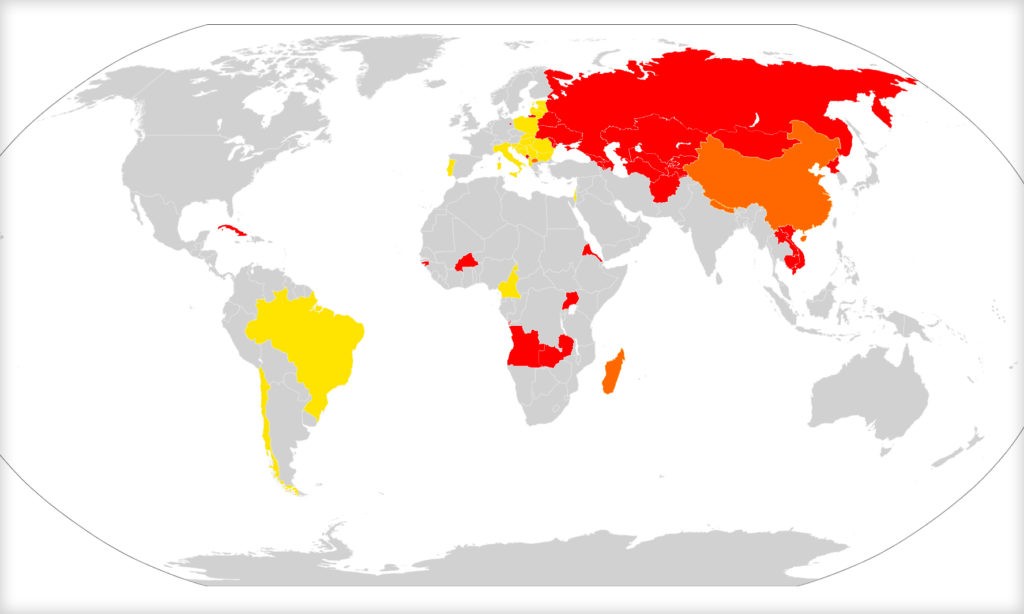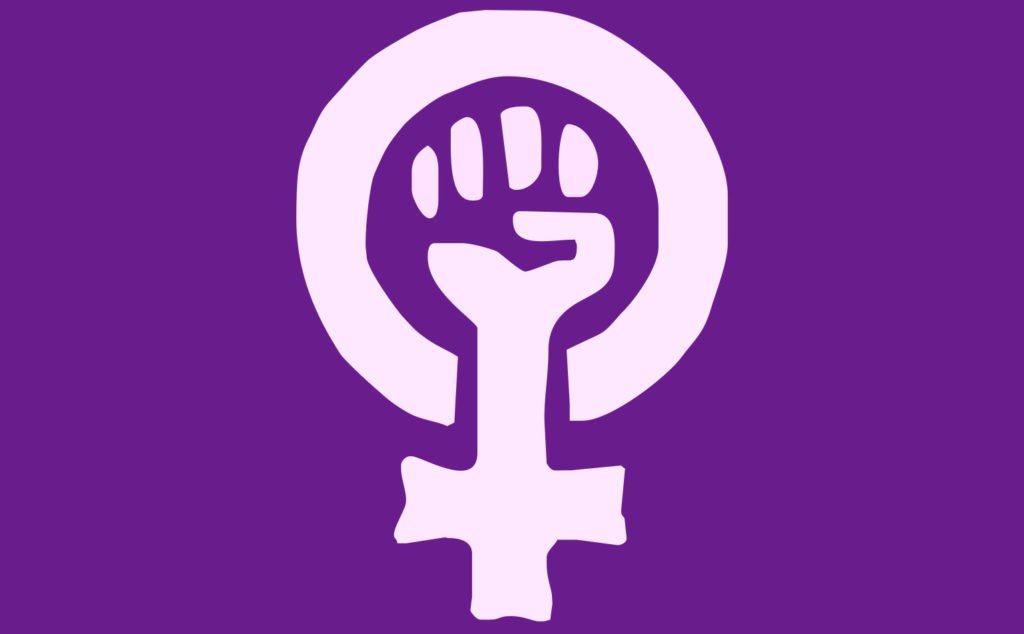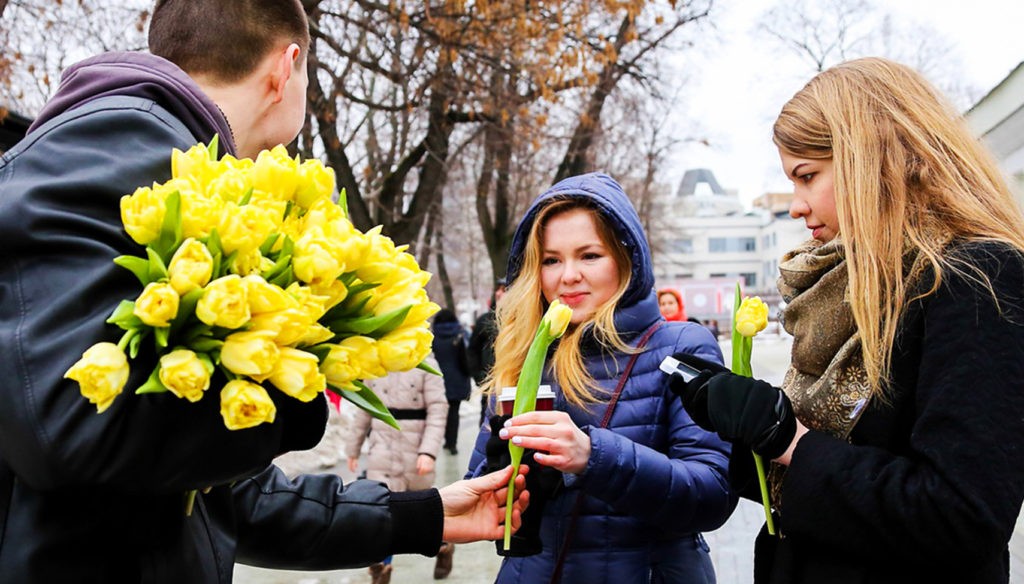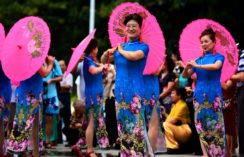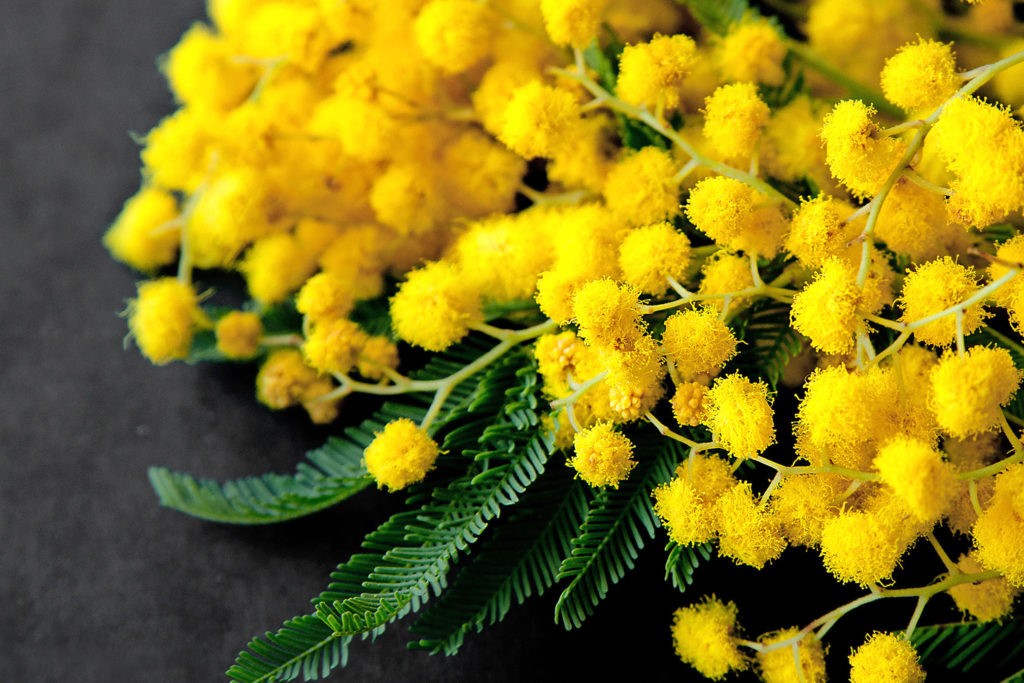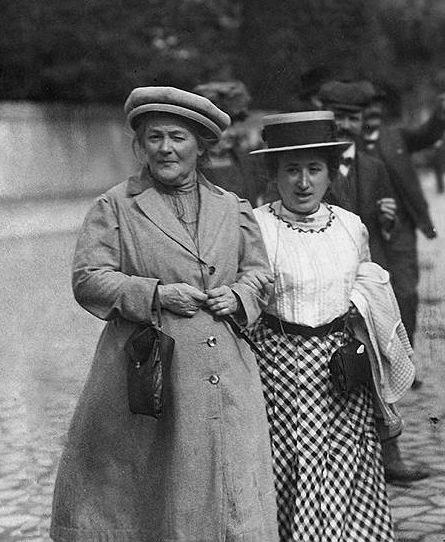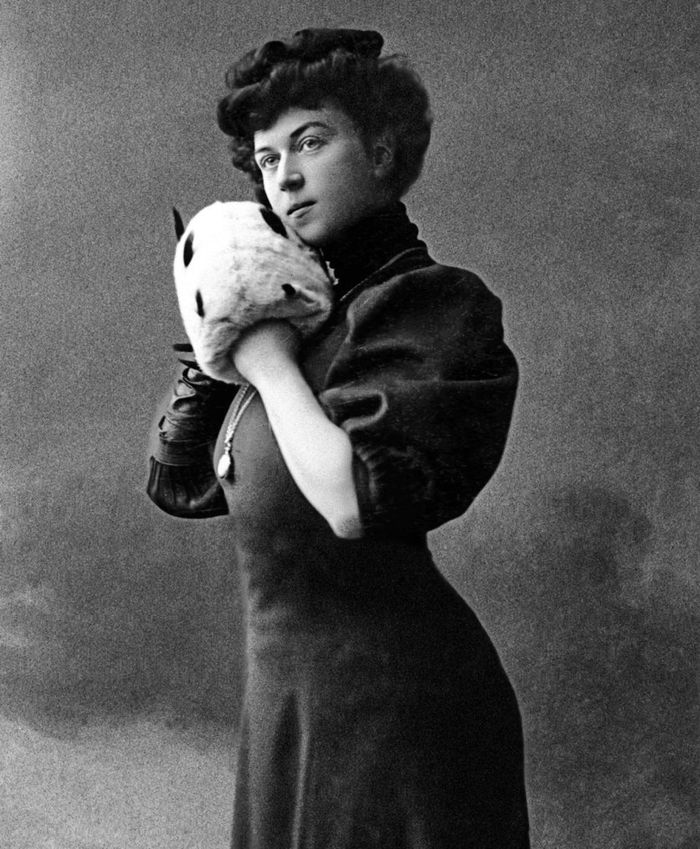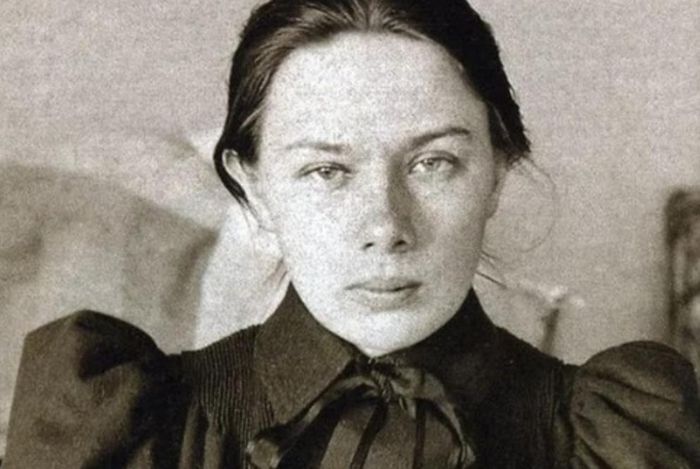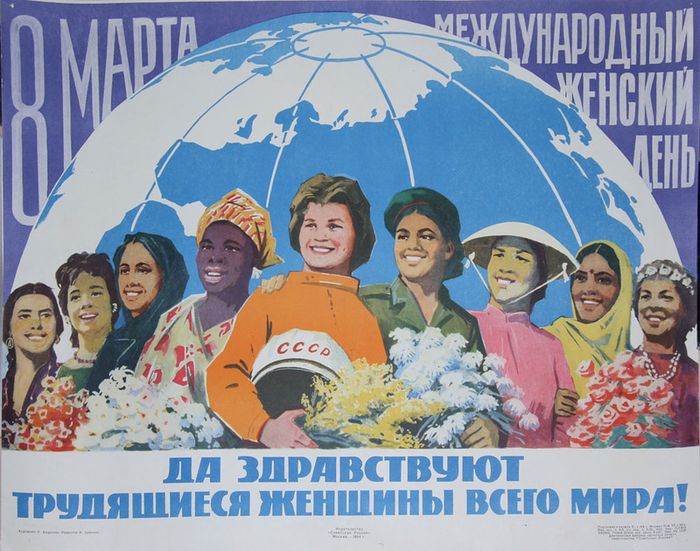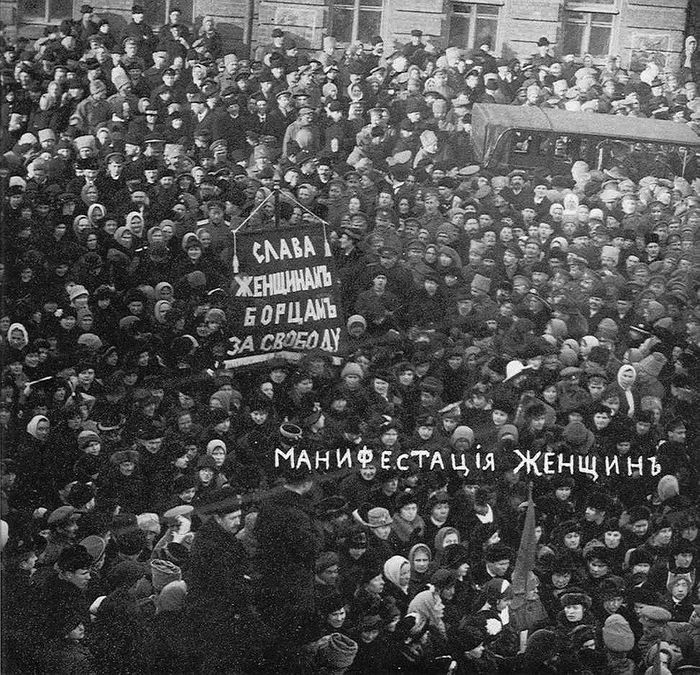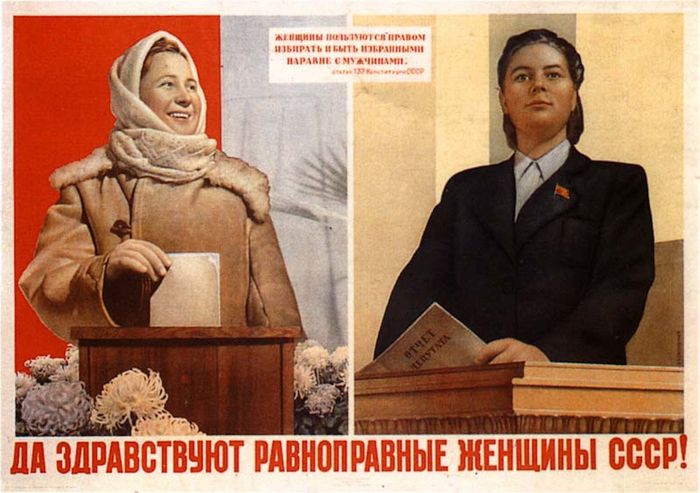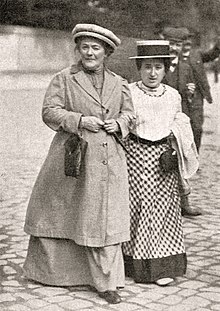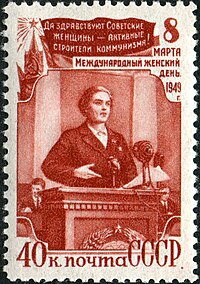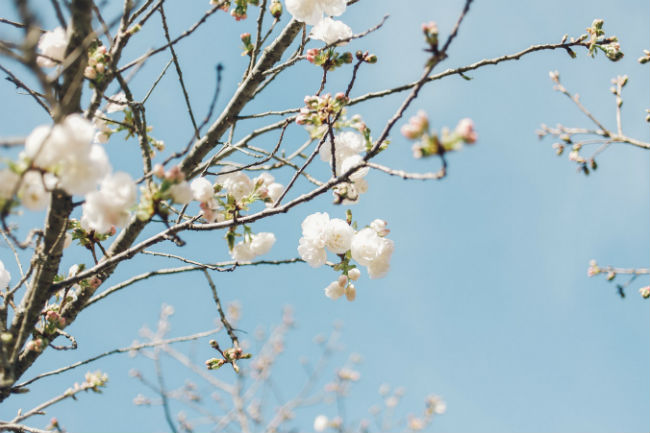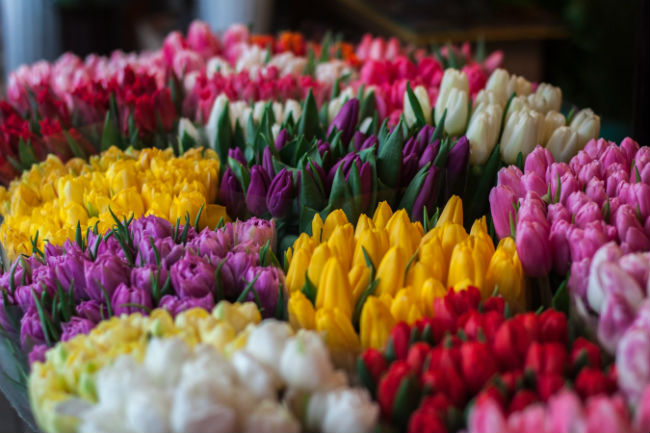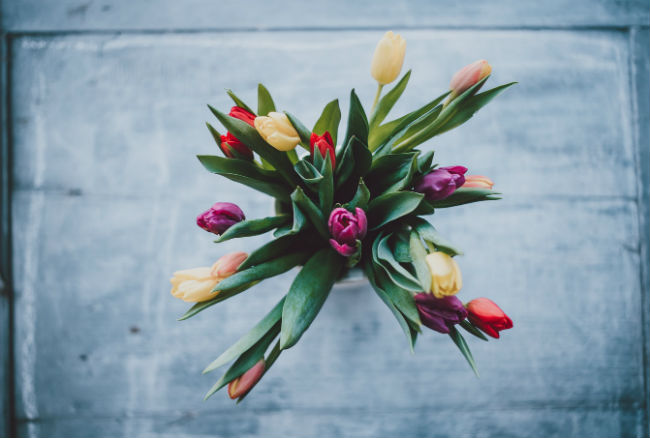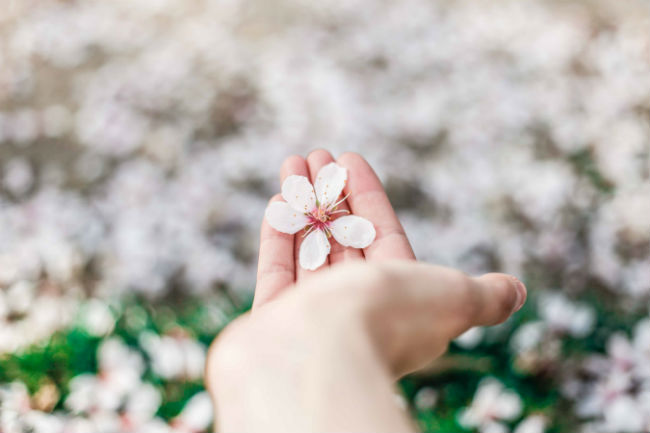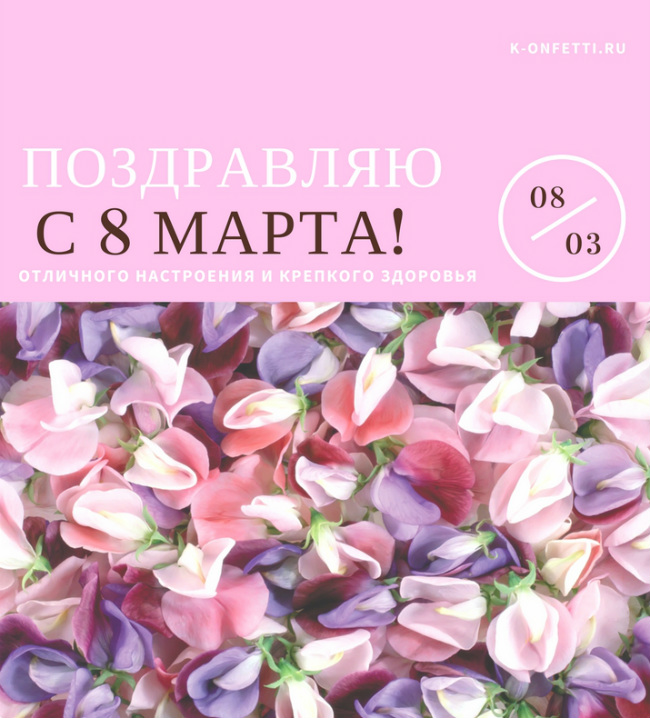Международный женский день – важный и всеми любимый праздник. 8 марта – это день, когда по всей стране разом пустеют цветочные магазины. Причем, вопросов «кого поздравлять и почему?» обычно не возникает. Но у этого праздника есть богатая история и отмечают его по-разному.
Праздник: 8 марта – Международный женский день
8 марта в ряде стран (Россия, Казахстан, Китай, Украина, Белоруссия, Бразилия и др.) отмечается Международный женский день. Изначально он возник в качестве солидарности женщин, которые отстаивали свое право быть наравне с мужчинами, боролись против дискриминации, различных ограничений и социальной зависимости.
Как появился Международный женский день? История возникновения
История возникновения Международного женского дня берет начало в 20-м веке. 28 февраля 1908 в Нью-Йорке состоялся митинг с участием около 15 тыс. женщин. Инициатором данного шествия стала социал-демократическая женская организация. Причина митинга – стремление женщин получить равные права с мужчинами (преимущественно трудовые), а также иметь возможность участвовать в выборах.
Ровно через год социалисты учредили национальный день женщин. С 1909 по 1913 его отмечали строго в последнее воскресенье февраля. Говоря о борьбе женщин за равноправие, часто упоминают Клару Цеткин. Именно ее считают основательницей Международного женского дня.
Клара Цеткин – известная политическая деятельница родом из Германии, активистка движения, которое сейчас называется феминизмом, принимала участие в формировании Коммунистической партии Германии. 27 августа 1910 она посещала Вторую Международную социалистическую женскую конференцию в Копенгагене, где встречалась с американскими делегатками.
Интересный факт: в США, где и был учрежден праздник 8 марта, сейчас он мало кому известен и никак не отмечается. Женщин поздравляют в другие даты, такие как День святого Валентина и День Матери. При этом они считаются наиболее уязвимой социальной группой.
На этой конференции она и вынесла предложение учредить женский день международного формата, но у него все еще не было конкретной даты. Предполагалось, что в этот день женщины смогут привлекать общественное внимание к своим проблемам при помощи массовых шествий.
Впервые Международный женский день прошел 19 марта 1911 в ряде стран: Германии, Швейцарии, Австрии и Дании. Спустя год, его отмечали здесь же, но 12 мая. Первые женские митинги в России, Франции состоялись 2 марта 1913. В других странах – 9 и 12 марта. А уже в 1914 г. восемь стран (что весьма символично) одновременно провели Международный женский день 8 марта.
1975 год стал Международным годом женщин, и Организация Объединенных Наций начинает всячески их поддерживать. С этого момента ежегодно 8 марта ООН проводит различные мероприятия, которые посвящены борьбе женщин за равноправие.
Также устанавливается определенная тема дня. Например, в 2019 году тема Международного женского дня звучала следующим образом: «Задумайся о равенстве, созидай дальновидно, разрабатывай новые методы в целях изменений».
8 марта – значение праздника раньше и в наши дни
Первоначально Международный женский день считался не столько праздником, сколько днем, в который женщины могут привлекать внимание общественности к своим проблемам по всему миру. Основательница Клара Цеткин полагала, что выбор единой даты объединит всех женщин.
8 марта проводились различные массовые митинги, собрания, шествия. Женщины выступали за трудовое равноправие с мужчинами, устранение любого рода дискриминации, возможность иметь право голоса на выборах и т.п.
В наши дни 8 марта для большинства утратило первое значение и превратилось в весенний праздник всех женщин любого возраста. Его отмечают как в семейном кругу, так и в различных коллективах.
Однако современное феминистическое движение все же иногда устраивает различные мероприятия с целью привлечения внимания общественности к нынешним проблемам женщин.
Кого именно нужно поздравлять 8 марта?
По современным традициям в день 8 марта поздравляют всех женщин, независимо от возраста, национальности, политической ориентированности и прочих различий. Праздник ассоциируется с началом весны, женской красотой и легкостью.
Обязательным символом считаются цветы (в частности весенние, например, тюльпаны или мимозы). Женщины обычно поздравляют и друг друга, хотя большее внимание им уделяется со стороны мужчин.
Когда начали отмечать Международный женский день?
В 1909 году Социалистической партией Америки объявлен национальный женский день, хотя привязки к определенной дате он не имел. Международный женский день учрежден в 1910 году, а в 1911 его отметили в нескольких странах.
Впервые праздник пришелся на 8 марта в 1914 году. В Российской империи 8 марта 1917 года в Петрограде прошла крупная демонстрация – Женская манифестация, которая положила начало дальнейшей революции. Позже в 1921 г. праздник будет учрежден именно в эту дату в честь всех женщин, принявших участие в демонстрации.
Почему Международный женский день празднуют 8 марта?
За рубежом днем праздника окончательно выбрано 8 марта после того, как большое количество стран одновременно провели его именно в этот день (1911 год). Прежде женский день проводился в разное время в период с февраля по май.
В России день 8 марта выбран в связи с крупнейшей демонстрацией 1917 года при участии большого количества женщин, которая послужила началом Февральской революции.
Интересный факт: в 1977 ООН предложила странам самостоятельно выбрать любой день для празднования дня всех женщин. Большинство из них, ввиду различных исторических событий, остановились на 8 марта.
8 марта в России
В Российской империи особенно активно борьба женщин пришлась на 1917 год. 8 марта (23 февраля по старому стилю) в Петрограде произошли события, которые положили начало Февральской революции. Несмотря на то, что император в ближайшее время своим указом позволил женщинам иметь право голоса, революция на этом не остановилась.
Женские митинги переросли в забастовки и демонстрации не без участия большевиков. В 1921 г. принято решение отмечать Международный женский день 8 марта, чтобы удостоить чести всех женщин, участвовавших в революции. Ведь события тех дней привели к свержению монархии.
В 1965 году уже при СССР 8 марта официально перенесено в категорию праздничных нерабочих дней. Если в 20-м веке внимание акцентировалось на женщинах, освоивших мужские профессии и т.п., то в наше время принято поздравлять всех представительниц прекрасного пола, независимо от возраста. Праздник приобрел семейный характер, отмечается также в учебных и трудовых коллективах.
После распада СССР Международный женский день остался праздником государственного уровня в России. Главным его атрибутом считаются цветы, которые принято дарить женщинам в дополнение к подаркам.
Интересный факт: около 60 стран ежегодно отмечают Международный мужской день 19 ноября. Россия в перечень этих стран не входит. Традиционно мужским у нас считается праздник 23 февраля.
В каких странах празднуют 8 марта?
Бытует мнение, что 8 марта существует только в социалистических странах, однако это не совсем так. Международный женский день действительно отмечают в странах бывшего СССР:
- Азербайджан;
- Белоруссия;
- Армения;
- Казахстан;
- Грузия;
- Латвия;
- Молдавия и др.
В Китае этот день считается выходным только для женщин (или сокращенным рабочим). Отношение к празднику сложилось неоднозначное, так как в народе его называют днем либо работающих женщин, либо тех, кто имеет семью и занимается домашним хозяйством.
Получается, что молодые незамужние девушки в эту категорию не попадают, поэтому они устраивают себе отдых днем ранее, 7 марта, и называют его праздником юных красавиц. Китайцы 8 марта дарят цветы мамам, родственницам, преподавателям, коллегам по работе. Молодежь обменивается поздравительными сообщениями. В целом праздник более политизированный.
В Казахстане 8 марта считается выходным для всех. Принято дарить женщинам подарки, в особенности матерям, поскольку с ними этот праздник ассоциируется в первую очередь. Организовываются различные поздравительные программы и мероприятия.
Во Вьетнаме к дате относятся более чем серьезно и уважительно. У здешних женщин, кроме 8 марта, есть еще один праздник 20 октября. Отмечать эти праздники начали с 1930 года благодаря активной деятельности общественного движения вьетнамских женщин. Традиции празднования отличаются по стране, но вручение цветов и проведение минимальных мероприятий – обязательны.
Женщин поздравляют 8 марта и 20 октября
Международный женский день в Берлине
Женский праздник в Индии отмечают в октябре в течение нескольких дней
Китаянки в традиционных праздничных нарядах
На Кубе женский праздник отмечают с особым размахом
Встреча бывшего президента Нурсултана Назарбаева с представительницами женской общественности
Большое значение праздник имеет на Кубе. В 1959 г. Фидель Кастро заявил, что женщины участвовали в военных действиях наравне с мужчинами. Это стало отправной точкой для учреждения Международного женского дня, который кубинцы начали отмечать наравне с остальными странами. Здесь уважают разносторонность женщин и не видят их исключительно в роли жен и матерей.
В Германии 8 марта отмечают выходным днем только в Берлине и то лишь с 2019 года. Для остальной страны такого праздника не существует. Немки не получают подарки – для них женский день сохранил прежнее значение, поэтому периодически устраиваются митинги за равноправие.
Во Франции и Великобритании нет такого понятия, как Международный женский день. Здесь он остался лишь в истории и соотносится с политическими настроями. Поздравлять женщин принято в другие даты: День матери, День бабушек, День святого Валентина и т.п.
В Бразилии 8 марта отмечается без выходного дня. Характер празднования здесь сильно отличается от привычного для нас. Бразильянки не получают цветов и подарков – только поздравления. Иногда проводятся разные акции, вроде вручения символических подарков. Хотя сами женщины в последнее время не слишком довольны этим, а представители власти также выражают желание привить зарубежные традиции своим гражданам.
Среди стран дальнего зарубежья, которые так или иначе отмечают женский день 8 марта, стоит отметить африканские: Анголу, Замбию, Камбоджу, Кению, Мадагаскар, Уганду. Также праздник существует в КНДР, Монголии и Лаосе.
Традиции праздника
Главная современная традиция 8 марта во многих странах – вручение цветов всем женщинам. И главное в этом – не их положение, а просто принадлежность к прекрасному полу. Зачастую мужчины освобождают своих жен от работы по дому, такой как уборка или приготовление еды.
В современном обществе также принято отмечать 8 марта внутри учебных и рабочих коллективов. В школах и учебных заведениях мальчики поздравляют девочек и учителей. Организовываются поздравительные мероприятия, концерты. В организациях и на рабочих местах устраиваются «корпоративы». Женщины получают поздравления, подарки, премии и т.п.
В остальном, как именно поздравлять с 8 марта, зависит от личных предпочтений каждого. Традиционно «женскими» подарками считаются сладости, украшения, парфюмерия и прочее. Открытки к Международному женскому дню с изображением цветов появились давно – еще во времена СССР, и не утратили своей популярности сейчас. Популярный детский подарок для мам и бабушек – что-либо, сделанное своими руками.
Международный женский день 8 марта, интересное видео
Если Вы нашли ошибку, пожалуйста, выделите фрагмент текста и нажмите Ctrl+Enter.
Историки рассказали о том, кто принес женский день в Россию, откуда взялся обычай дарить мимозу и как 8 Марта стало предвестником Февральской революции.
8 Марта – прекрасный праздник, который ассоциируется с цветами, теплыми женскими улыбками и подарками, а в нашей стране это еще и официальный выходной день.
Но часто ли мы задумываемся, откуда к нам пришел Международный женский день? Между тем этот праздник имеет богатую историю, окрашенную в красные цвета революции.
Есть разные версии насчет того, откуда он ведет свою историю. Одна из наиболее популярных гласит, что все началось с «марша пустых кастрюль», который в этот день в 1857 году провели текстильщицы Нью-Йорка, бастовавшие против переработок и низких зарплат. Однако ряд историков утверждает, что в этот день (который, кстати, пришелся на воскресенье) никакой забастовки в Нью-Йорке не было, а эта история якобы была придумана журналистами французской газеты L’Humanité с целью «отвязать Женский день от советской истории». Что здесь правда, а что вымысел – теперь уже трудно выяснить, но мы решили попытаться рассмотреть обе точки зрения и попытаться составить представление о том, каким был главный женский праздник у самых своих истоков.
Историк и политолог, а также секретарь Центрального комитета Ленинского Комсомола Союза молодежи РФ по информационно-аналитической работе Ярослав Листов в деталях рассказал об истории 8 Марта вплоть до наших дней и напомнил, что изобретением этого праздника мы обязаны не только Кларе Цеткин и Розе Люксембург.
Без голоса, наследства и паспорта
– Ярослав, кто все-таки придумал Женский день? Можно ли сказать, что Клара Цеткин создала этот праздник?
– Безусловно, Клара Цеткин была инициатором этого праздника. На конгрессе в Копенгагене она предложила его в качестве Международного женского дня (имеется в виду II Международная социалистическая женская конференция в рамках XVIII конгресса Второго Интернационала. – Прим. ред.). До этого 8 марта еще не было Женским днем, а символизировало борьбу женщин за свои права. Это был период, когда женщина не имела ни права голоса, ни права на наследство, а в России она не имела даже паспорта и была занесена в паспорт к мужу. Поэтому, естественно, все эти социально-экономические и политические вопросы требовали своего разрешения.
– В истории 8 Марта фигурирует еще одна известная революционерка – Александра Коллонтай. Это правда, что именно она принесла Женский день в нашу страну?
– Александра Коллонтай в период своей революционной деятельности, находясь в эмиграции, тоже активно участвовала в социалистическом конгрессе женщин и активно поддерживала распространение этого праздника. После того как в России свершилась Октябрьская революция, Коллонтай была назначена наркомом социального призрения (или, как бы сейчас сказали, министром социальной политики). В частности, одной из ее инициатив было введение в новый советский календарь Международного женского дня. Так что в этом плане Коллонтай, безусловно, внесла главный вклад в учреждение этого праздника у нас. Никто из большевиков не возражал, поэтому особого сопротивления этой инициативе не было. А в дальнейшем, уже в период становления и развития этого праздника, большую роль в его судьбе сыграла Надежда Константиновна Крупская. Коллонтай к тому времени уже была послом в Мексике, поэтому, естественно, влиять на формирование праздника она не могла. Но тем не менее она оказала большое влияние на женский день в его первом формате, даже выпустила несколько брошюр, посвященных 8 Марта. Самым важным моментом здесь, наверное, является то, что Россия не просто ввела 8 Марта после Октябрьской революции, а стала первой страной в мире, которая полностью уравняла женщин в правах с мужчинами – политических, экономических и социальных.
Мимозы от Крупской и «мифический» марш
– Значит, в России эмансипация победила раньше, чем на Западе! А вы можете привести какие-то наиболее яркие примеры равноправия полов, которые возникли в то время?
– Например, в тех же Соединенных Штатах Америки женщина получила право голоса только в 70-е годы XX века. У нас же она получила это право сразу же по Конституции 1918 года! То же касается права подачи заявления на развод: многие страны Европы пришли к этому только после Второй мировой войны, а у нас женщина имела право инициировать развод тоже уже в 1918 году наравне с мужчиной. Соответственно, все права женщин, которые сегодня нам кажутся естественными, появились как раз в Конституции 1918 года, которая в этом году, кстати, отмечает 100-летие. Большую роль здесь, конечно, сыграла и Клара Цеткин, которая в этот момент тоже активно сотрудничала с российской партией большевиков и Владимиром Лениным, и уже упомянутая Коллонтай, как непосредственный член правительства, поскольку и в 1918 году, и в течение всего периода Гражданской войны она входила в высшее руководство страны и влияла на многие решения.
– Какова роль Крупской в том, что женский праздник у нас так хорошо прижился?
–Она, по сути дела, автор того формата празднования 8 Марта, которое мы наблюдаем в 1930-е годы. Это связано с тем, что, будучи заместителем народного комиссара просвещения РСФСР, Крупская курировала в том числе и процесс создания праздников. Существует мнение (это, скорее, легенда, потому что мы знаем об этом не из документов, а из воспоминаний) о том, что Крупской принадлежит авторство такой неотъемлемой детали 8 Марта, как дарение мимозы. Согласно этой легенде, однажды к ней обратилась одна из работниц фабрики с вопросом, как можно поздравить женщин в этот день. Надежда Константиновна ответила: «Женщины больше всего любят цветы!» «Да, но где же их сейчас взять?» – удивилась работница. И выяснилось, что единственные цветы, которые можно найти в этот период, когда еще, как правило, держатся заморозки, – это мимоза. Так этот цветок оказался «внедрен» в праздник 8 Марта. Но опять же, мы знаем об этом только из воспоминаний, поэтому, насколько это достоверная история, сказать сложно.
– А что все-таки послужило поводом для этого праздника? Я читала, что все началось с так называемого «марша пустых кастрюль», который 8 марта 1857 года провели текстильщицы Нью-Йорка. Эти женщины якобы протестовали против неприемлемых условий труда и низких зарплат. Но некоторые историки, как я успела заметить, опровергают эту версию, поскольку в документах и в прессе якобы нет никаких сведений об этой забастовке. Так где же истина?
– Знаете, информация о том, что этого марша якобы не существовало, появилась только в период так называемого маккартизма в Соединенных Штатах. А для участниц женского конгресса эта информация была абсолютно достоверной, и никто никогда, вплоть до эпохи маккартизма, не подвергал это сомнению. Более того, в бывшем Институте марксизма-ленинизма, а ныне в Российском государственном архиве социально-политической истории, сохранились газеты, которые рассказывают об этом марше, поэтому говорить о том, что это миф, не приходится. Все, кто заявляет, что это миф, опираются на американскую прессу. Но ведь в этот же период американская пресса, например, писала о том, что коммунисты хотят убить президента Эйзенхауэра, о том, что Советский Союз планирует нападение с использованием подводных лодок и т.д. То есть в то время появилось много антисоветских и антикоммунистических мифов, так что говорить о том, что этого марша не было, – нельзя. Поэтому большинство историков сходятся на том, что демонстрации все-таки были. Может быть, конечно, они не были такого масштаба, который в дальнейшем им был приписан, но то, что они имели место и именно 8 марта, – это факт.
Праздник передовых пионерок
– Встречается мнение о том, что раньше, у самых истоков эмансипации, Международный женский день был посвящен в основном «мужественным» женщинам, которые преуспели в «мужских» профессиях. Вы согласны с этим?
–Понимаете, этот вопрос очень спорный. Какую профессию могла иметь женщина в начале XX века? Максимум она могла быть домашним учителем, кухаркой или официанткой. Круг профессий был очень узок, а все остальные занятия считались мужскими. Даже профессия бухгалтера, которая сейчас абсолютно у всех ассоциируется с женщинами, в те времена была мужской. Преподаватель университета, где у нас сейчас тоже доминируют женщины, – раньше это тоже была мужская профессия. Поэтому естественно, что в период становления праздника большое внимание уделялось тем женщинам, которые стали первыми. Условно говоря, одним из символов 8 Марта была и до сих пор остается Валентина Терешкова, как первая женщина-космонавт.
– То есть чествовали в основном женщин – пионерок в каком-то деле, куда их раньше отказывались пускать?
– Да, совершенно верно! Получение женщиной права на то, чтобы самореализоваться там, где раньше ей был закрыт путь, – вот что было главным. Таким образом, этот праздник касался не просто «мужественных» женщин, а именно передовых, пионеров – женщин, которые совершают что-то новое. Поэтому естественно, что в период, когда это было исторически и политически необходимо, акцент был сделан на этом. Когда женщина стала абсолютно уверена в своих правах и все пути для нее стали открыты, акцент праздника сместился на тот формат, который мы видим сейчас, то есть чисто гендерный – женский. Но при этом во многих странах мира 8 Марта до сих пор имеет такой окрас. Например, для Ближнего Востока очень актуален вопрос участия женщины в политической деятельности и мужских профессиях, потому что там эта революция не случилась.
– Кстати, а во многих странах, кроме России, Женскому дню придают такое же значение? Мне, если честно, казалось, что сегодня это все-таки больше наша традиция, хоть праздник и называется международным…
– Нет, этот праздник отмечается и за рубежом, просто не во всех странах он является государственным. Но есть Международная демократическая федерация женщин, в которую входят представительницы 160 женских организаций, и они постоянно празднуют этот праздник. Вообще, женский день активно отмечается в Европе. Но у нас, благодаря тому, что он стал государственным, он просто приобрел вот этот оттенок уважительного отношения к женщине, а там он все еще сохраняет формат борьбы женщин за свои права. Это связано с особым отношением к женщине в этих странах.
Комментарий от историка Натальи Пушкаревой
Несколько вопросов о причинах празднования Международного женского дня мы также задали Наталье Пушкаревой, которая по праву считается основоположницей исторической феминологии и гендерной истории в советской и российской науке. Наталья Львовна – доктор исторических наук, профессор, она заведует сектором этногендерных исследований Института этнологии и антропологии РАН, а также возглавляет Российскую ассоциацию исследователей женской истории (РАИЖИ).
В отличие от Ярослава Листова, Пушкарева придерживается несколько иной версии происхождения праздника. По ее мнению, «марш пустых кастрюль», который, как принято считать, имел место 8 марта 1857 года в Нью-Йорке, все-таки был придуман пропагандистами. О причинах такой «подмены» она говорит следующее:
– В ходе противоборства авторитарии в общественных движениях нередко пытались присвоить себе не принадлежавшие им традиции. Так они сделали с песней «Интернационал», написанной анархистом Эженом Потье: ее подправили и без антигосударственных и антимилитаристских куплетов превратили в гимны социалистических и «коммунистических» партий.
Так социал-демократы поступили с Первомаем, объявив «своим» праздником день памяти чикагских рабочих-анархистов, которые вышли 1 мая 1886 года на улицы, потребовав 8-часового рабочего дня.
И точно такая же история произошла с днем трудящихся-женщин. 1857 год полностью придуман позднейшей пропагандой, однако в конце февраля 1864 года забастовали работницы прачечных для стирки воротничков в городе Трой (штат Нью-Йорк). Инициаторами стачки выступили Кейт Маллени, Эстер Киган и Сара Мак-Киллан. Работницы потребовали повышения заработной платы на 20–25 % и установки гладильных машин, к стачке примкнули 300 женщин из 14 прачечных. По существу, это и стало началом первого устойчивого женского профсоюза в истории страны. Забастовка закончилась к 1 марта полной победой. К 1910-м годам в ряде стран Европы и в США сложилась практика февральско-мартовских демонстраций и стачек с требованием улучшения условий труда. Не избежала этого и Россия, – рассказала историк.
Также Пушкарева отметила, что «“женская тема” и Женский день стали актуальны после декабря 1908 года, когда в Санкт-Петербурге состоялся Первый Всероссийский женский съезд».
Любопытным представляется и тот факт, что так называемый «революционный взрыв», который предшествовал Февральской революции, разыгрался 23 февраля, а по новому стилю – 8 марта 1917 года. Таким образом, случайно переплелись две даты, которые для сегодняшнего поколения россиян олицетворяют главный мужской и женский праздники.
Об этом Пушкарева пишет в своей статье «Женское движение в общественно-политической жизни России 1914–1917 гг.: некоторые итоги изучения проблемы в отечественной историографии»:
«В объяснении причин возникшего революционного взрыва в феврале 1917 года советская историография с 20-х годов ставила агитацию большевиков в “женский день” в связи с Международным женским днем 23 февраля (8 марта по н. ст.) 1917 года. В цепочке обстоятельств, которые сложились в те дни, это было случайным совпадением. Массовым выступлениям способствовала организация собраний, посвященных этой дате как дню солидарности женщин в борьбе за свои права. С 1913 года этот день стал отмечаться социал-демократами ежегодно в России в разных городах собраниями и демонстрациями в зависимости от полицейских условий. Листовки социалистов, обращенные к женщинам, появились лишь на рубеже 1916–1917 годов, в том числе с призывом к демонстрациям. В канун 23 февраля их заменили тексты в помощь пропагандисткам на тему “Война и дороговизна”, составленные в подпольном Выборгском РК РСДРП, которые читались работницам, близким к революционному подполью, были назначены ораторы для организации собраний и митингов».
Также Пушкарева указывает на то, что истинной причиной массовых выступлений женщин в Петрограде были перебои с поставками хлеба в рабочие районы столицы:
«Война открыла женщинам глаза на реальное положение вещей, рождая антивоенные протесты. Это подчеркивается и в новейших работах о первом дне революции. Работницы, солдатки, начавшие движение первыми, обращались к рабочим Металлического завода: “Наших мужей на фронте бьют, а мы здесь день и ночь маемся. Довольно терпеть. Объявим всеобщую забастовку!”; “Здесь голод, непомерный труд, обиды, издевательства. У вас тоже есть матери, жены, сестры! Мы требуем хлеба и прекращения войны!”»
Помимо солдаток и работниц фабрик, участвовали в демонстрациях и «профессиональные революционерки». Как пишет Пушкарева, эти женщины «еще до войны занимались пропагандистской деятельностью, вели работу в рабочих клубах, больничных кассах, вслед за мужьями входили в ряды нелегальных партийных организаций в столице, участвовали в стачках в разных губерниях, участвовали в международных социалистических конференциях». Среди них и уже хорошо известная нам Александра Коллонтай, а также Анна Елизарова-Ульянова (старшая сестра В. И. Ленина), Конкордия Самойлова и многие другие.
Во время нашей беседы Наталья Львовна с сожалением отметила, что сегодня мало кто из наших соотечественников вспоминает об истинной сути этого замечательного женского праздника: «Это День солидарности трудящихся женщин, о чем советских женщин заставили забыть: вроде как их права защищены и все трудятся, солидаризироваться им не в чем, достаточно поздравлений…»
В любом случае Международный женский день – это традиция, которая прижилась и стала неотъемлемой частью нашей культуры, поэтому важно не только дарить подарки и делать комплименты прекрасному полу, но и помнить, почему мы действительно всё это делаем и для чего нам нужен этот праздник – 8 Марта.

Любимые женщины приходят к нам веснами,
Они неожиданны, как дождь или снег.
Любимые женщины приходят к нам звездами,
Когда открываем мы одну среди всех.
«Любимые женщины» музыка С.Туликова, слова М.Пляцковского
8 марта — Международный женский день (International Women’s Day) — всемирный день женщин, в который помимо чествования прекрасной половины человечества, также отмечаются достижения женщин в политической, экономической и социальной областях, празднуется прошлое, настоящее и будущее женщин планеты.
Современное празднование Женского дня уже не имеет цели утверждения равенства (как было изначально), а считается днём весны, женской красоты, нежности, душевной мудрости и внимания к женщине, вне зависимости от её статуса и возраста.
Праздник отмечается Организацией Объединенных Наций, а в некоторых странах — например, России, Азербайджане, Армении, Беларуси — этот день является национальным праздником.
Идея проведения Международного женского дня впервые возникла именно в начале 20 века, когда промышленно развитый мир переживал период экспансии и потрясений, демографического бума и зарождения радикальных идеологий.
Отсчёт первого празднования Международного женского дня принято вести с 1909 года, когда в США 28 февраля отмечали первый национальный женский день по инициативе Социалистической партии Америки. Несколько лет там отмечали этот день в последнее воскресенье февраля. Затем волна женских митингов, демонстраций и манифестаций захлестнула Европу.
В 1910 году в Копенгагене состоялась 2-я Международная конференция работающих женщин (Second International Conference of Working Women). Лидер женской группы социал-демократической партии Германии Клара Цеткин (Clara Zetkin) выдвинула идею празднования Международного женского дня. Она предложила, чтобы Женский день отмечался ежегодно в каждой стране в один и тот же день. Целью этого праздника Цеткин назвала борьбу женщин за свои права.
Существует мнение, что первый в истории «марш пустых кастрюль» текстильщиц Нью-Йорка, прошедший 8 марта 1857 года, стал одной из предпосылок празднования Международного женского дня.
Официальный статус «Международного женского дня» этот праздник приобрёл по решению ООН в 1975 году, и с тех пор он отмечается ООН ежегодно как Международный день борьбы за права женщин и международный мир и каждый год посвящён определённой теме.
В этот день женщины всех континентов, нередко разделённые национальными границами или этническими, языковыми, культурными, экономическими и политическими различиями, имеют возможность собраться вместе и вспомнить о традиции, которая олицетворяет собой, по крайней мере, несколько десятилетий борьбы за равенство, справедливость, мир и развитие.
В Древней Греции Лисистрата ради прекращения войны организовала сексуальную забастовку против мужчин; во время Французской революции парижские женщины, выступавшие за «свободу, равенство и братство», организовали марш на Версаль, чтобы потребовать предоставления женщинам избирательного права.
С праздником! (Фото: Sveta Orlova, по лицензии Shutterstock.com)
Международный женский день — это праздник всех женщин, ставших творцами истории. Неудивительно, что женщины стали первопроходцами во многих областях — вот только некоторые факты, объединенные женским «первая». В январе 1906 года в Санкт-Петербурге открылось первое в России высшее техническое учебное заведение для женщин; в январе 1909 года в Нью-Йорке стартовала первая в мире женская автогонка; в мае 1989 года состоялось первое выступление женского «Вивальди-оркестра».
В современном обществе Международный женский день, в первую очередь, — это праздник весны и внимания к женщине, когда представители сильной половины человечества могут еще раз порадовать своих любимых и родных женщин подарками и заботой.
Мы все знаем официальную историю этого праздника, но Франсуаза Пик (Françoise Picq), социолог и эксперт по феминистским движениям, рассказывает о довольно туманных корнях этого праздника.
Женский день зародился из «явно антифеминистского собрания», утверждает она. Дело в том, что в 1910 году феминизм по мнению многих был неразрывно связан с буржуазией.
Когда на второй Международной конференции женщин-социалисток в Копенгагене Клара Цеткин предложила создать Международный женский день, перед ней стояло сразу две задачи. Она стремилась сделать так, чтобы руководство социалистов подхватило требования женщин (право голоса, равная зарплата…), и в то же время хотела ослабить влияние буржуазных феминисток на женщин из рабочей среды.
Клара Цеткин и Роза Люксембург
Немецкие социалистки и небезызвестная коммунистка Клара Цеткин на пару с Розой Люксембург в следующем году на Женской конференции согласились, что необходим праздник, который бы продвигал равные права для женщин, в том числе и суфражистские идеи.
«Социалисткам было запрещено вести борьбу совместно с буржуазными феминистками, — объясняет Франсуаза Пик. — Традиция Международного женского дня была изначально выбором лишь одной группы, в рамках которого феминизм и социализм исключали друг друга».
Вот как все начиналось…
Начало революции 1917 года
После принятия решения социалистические организации начали отмечать этот праздник в разные дни года в зависимости от страны. В Германии, Австрии и Дании демонстрации прошли 19 марта 1911 года. В России Женский день сначала отпраздновали 3 марта 1913 года, а затем 8 марта 1914 года. Выбор дат был совершенно произвольным, никакого официального решения тут так и не прозвучало.
8 марта 1917 года в России вновь отметили Женский день. Бастующие рабочие и простые женщины вышли на улицы Петрограда. Толпа разрасталась, к ней присоединились мужчины… Таким было начало февральской революции, которая зародилась именно 8 марта из-за расхождений между грегорианским и юлианским календарями.
В 1921 году Советский Союз официально утвердил 8 марта Женским днем в память о той женской демонстрации 1917 года, которая ни много ни мало положила начало революции в России.
Постепенно этому примеру последовали страны Восточной Европы, Китай, Вьетнам и Куба. 8 марта стал коммунистическим праздником.
Но потом, в 1955 году в прессе появилось объяснение корней этого дня 8 марта. 8 марта 1857 года началась забастовка работавших на текстильной фабрике в Нью-Йорке женщин. За всеми демонстрациями женщин в XIX и начале ХХ века неизменно следовали жесткие репрессии. Но никаких следов похожих событий 8 марта 1857 года не осталось. Кроме того, тот день пришелся на воскресенье, которое не слишком подходит для стачки…
Миф о нью-йоркской забастовке 1857 года
Получается, американцы пытались перетянуть на себя Женский день, который до того момента был на 100% коммунистическим праздником? В условиях холодной войны такое объяснение может показаться весьма притягательным. Но миф о нью-йоркских рабочих появился на страницах L’Humanité, которая, насколько нам известно, не была продавшейся Америке газетой… Кроме того, материал вышел из-под пера таких убежденных коммунисток как Ивонн Дюмон (Yvonne Dumont), Клодин Шома (Claudine Chomat), Мадлен Колен (Madeleine Colin).
Легенда об американском происхождении этого праздника существовала более 20 лет, и никто даже не пытался проверить ее историческую достоверность. Сцена действительно была прекрасной и героической: американские швеи выходят на демонстрацию посреди Нью-Йорка. Они скандируют лозунги о равенстве зарплат и сокращении рабочего времени. Их кулаки подняты вверх, а волосы развеваются на ветру. Все завершается появлением полиции и жестоким разгоном женской демонстрации.
«Существовало несколько вариантов декораций (весеннее солнце или холодный зимний ветер) и действующих лиц (работницы текстильной фабрики или швеи), тогда как упор делался на борьбе с репрессиями, клятве собираться каждый год или ужасном несчастном случае на производстве, — рассказывает Франсуаза Пик. — Тем не менее, все сходились на месте и времени (8 марта 1857 года) и политическом смысле этого события».
Во всяком случае, это куда сильнее будоражило воображение, чем какая-то непонятная конференция женщин-социалисток на фоне съезда Второго интернационала.
Тем не менее, в 1977 году Франсуаза Пик с четырьмя коллегами решили пролить свет на происхождение 8 марта для феминистского журнала Histoires d’Elles. К тому моменту эта легенда о нью-йоркской забастовке прочно засела в сознании:
«Все газеты рассказывали одну и ту же историю, копировали друг друга».
Тем не менее, результаты их работы заставили позеленеть от зависти любого уважающего себя историка:
«Добравшись до истоков, мы обнаружили, что там ничего нет! Ничего совершенно не складывалось».
Не было никаких указаний на какие-либо происшествия на нью-йоркских улицах 8 марта 1857 года.
Почему L’Humanité создала этот миф?
Тогда ученые нашли первое упоминание об этом мифе в статье L’Humanité 1955 года. И задались вопросом: «Зачем нужно было в самый разгар холодной войны пытаться найти для Женского дня более давние и произвольные корни, чем решение женщин из партии? С чем связано это стремление отвязать Женский день от советской истории?» Действительно, зачем…
В конечном итоге Франсуаза Пик пришла к выводу о существовании внутренней напряженности в коммунистическом движении, разногласий между Всеобщей конфедерацией труда (CGT) и Союзом французских женщин (UFF): «Мадлен Колен хотела вновь сделать 8 марта частью рабочей борьбы. А UFF превратил его в что-то вроде праздника матерей, как в СССР». На Востоке 8 марта едва ли можно было охарактеризовать как день борьбы.
«Женщинам разрешали на два часа раньше уйти с работы, и они могли зайти в парикмахерскую», — рассказывает Франсуаза Пик.
Речь шла о том, чтобы «противопоставить борьбу трудящихся коммунистическому празднику женщин». Даже если для этого приходится привязать рабочую борьбу к Америке?
«События, которые могли послужить основой для этого мифа, и окружавшие его появление противоречия до сих пор сокрыты завесой тайны, — признает Франсуаза Пик. — Тем не менее, нельзя не отметить скорость его распространения. Все выглядит так, словно он стал ответом на некое несформулированное ожидание».
С распространением мифа Женский день стал международным. Американские феминистки оценили его предполагаемые нью-йоркские корни и привезли праздник в США. В 1970-х годах его взяли на вооружение все феминистские движения.
В 1977 году ООН выступила с инициативой посвятить день правам женщин и миру во всем мире.
В 1982 году министр по правам женщин Иветт Руди (Yvette Roudy) официально ввела Женский день во Франции.
«Мы хотели объяснить Иветт Руди, что все это — неподтвержденный миф, — вспоминает Франсуаза Пик. — Тем не менее, эта легенда прекрасно подходила министру: она прославляла борьбу женщин в классовой борьбе».
Миф о 8 марта 1857 года постепенно забыли, хотя у него и осталось несколько очагов сопротивления, например, в той же L’Humanité. «Эту дату уже давно заездили в прессе, но она все равно позволяет отследить развитие ключевых вопросов в тот или иной момент», — делает вывод Франсуаза Пик, подчеркивая важность такого праздника для борьбы за права женщин.
До России празднование докатилось в 1913 году. Женский день вовсе не был таким мирным, как сейчас, а сопровождался митингами и демонстрациями. Так, 23 февраля 1917 года по старому стилю (то есть 8 марта по новому) забастовка текстильщиц и последующее организованное шествие с требованием равных прав для женщин стали одним из триггеров к дальнейшей волне протестов, которые привели к Февральской революции. Совпавший по дате с одним из важнейших переломных моментов в истории России, праздник как традиция укрепился в СССР. Примерно до 70-х годов 8 Марта в первую очередь ассоциировалось с участницами революции и их успешной борьбой за независимость женщин. Так или иначе история праздника на Западе и в России свидетельствует, что в первую очередь он был придуман как инструмент эмансипации и популяризации уважения к женщинам.
История умалчивает, когда и почему на смену шествиям и демонстрациям пришла нынешняя конфетно-букетная традиция празднования 8 Марта. Некоторые авторы считают, что виной тому стала сознательная и последовательная политика советского руководства. Уже в 30-е годы были упразднены столь необходимые женотделы, занимавшиеся агитацией, образованием, помощью и борьбой за права женщин. Тем самым женщины лишились социального лифта, а не достигли новых вершин в равноправии. Последующие женские организации носили во многом номинальный характер. Постепенно революционная тематика исчезла даже с открыток, и акценты сместились на воспевание женской красоты и материнства, сделав праздник похожим, скорее, на День матери в других странах.
В 1966 году, при Брежневе, 8 Марта стало выходным днем, так что активная идея даты окончательно угасла. Сегодня праздник окончательно превратился в день следования стереотипам о женщинах. Это заметно и по традиционным подаркам, и по описанию Международного женского дня в русскоязычном интернете. По данным «Левада-Центра», в России самыми популярными
подарками на 8 Марта остаются цветы и сладости, а также парфюмерия и косметика. По данным ВЦИОМ только 5 % связывают праздник с эмансипацией. С одной стороны, этот опрос показывает положительную динамику в отношении равноправия — количество считающих, что женщины достойны тех же привилегий, что мужчины, увеличилось в 1,5 раза. С другой — каждый пятый респондент всё еще считает мужчин куда более способными, чем женщин. Гендерная принадлежность участников опроса не указана.
PS: В мире существует Международный мужской день, он отмечается 19 ноября. Этот праздник призван привлечь внимание к точно таким же вопросам, как и женский, только в отношении мужчин, а также поддерживать гендерный баланс. К сожалению, в России его совсем не празднуют, предпочитая дарить мужчинам носки и одеколоны в День защитника Отечества.
[источники]источники
https://inosmi.ru/world/20140308/218309548.html
День 8 марта
Женское Начало. Сказано много. Но жизнь беспредельна. И Начало уходит корнями в Беспредельность. В мужском начале была заложена сила преодоления хаотического наполнения Вселенной. В женском – наполнение распространения связующей материи. В мужском была заложена идея строительства новых форм, в женском – приведение форм в соответствие с материей, в которой эти формы были зарождены. В мужском начале была идея оборонить созданные формы от разрушительных сил, в женском – была заложена и проявлена идея сохранить эти формы в их развитии, украсить их для соответствия образцу. Именно женское начало, хранящее в себе Тайну-Знания о Всеначальной материи, дающей утончение, заложило способность улавливать новые образцы форм, а затем передавать уловленные образы мужскому началу для дальнейшего строительства. И когда мужское начало выстраивает основы этих новых форм, женское начало украшает их многоцветием всех видов красоты – в звуке, цвете, запахе. А когда женское начало вольёт свою скрепляющую любовью светоносную материю, то и форма возрадует человечество и весь мир новой, невиданной красотой. Сказали только о немногом, но и в этом можно понять величие и значение женского начала.
Олег Чеглаков
Значение дня 8 марта
Миру Свет, Миру Красота явлена. Они явлены от двух начал – женского и мужского. И оба они равны, незаменимы и взаимозависимы. Два начала выражают закон полярности. На этом законе построено и вращение, и движение, и сама жизнь! Есть равновесие двух начал – есть и гармоничное движение к утончению и совершенствованию, движение в эволюцию! Нет равновесия – нет эволюции! В жизни земной равновесие двух начал достигается их равноправием и полноправием. Но каждое равноправие и полноправие всегда проходит при ведущей роли одного из этих двух начал. Человечество вступает и уже вступило по Космическим Срокам в Новую Светлую Эпоху. Светлую – означает более светоносную, а следовательно, утончённую. И требуется аппарат самый утончённый и возвышенный, которым является женщина. Потому она по праву должна занять ведущее место в эволюции человечества. Женщина – ведущая! И Учителя человечества, Дающие Знания, Зовущие в лучшее будущее и Ведущие по пути Эволюции, находили и находят все возможности, чтобы убедить сознательное человечество в важнейшей роле женщины в Новую Эпоху. Это они, наши Учителя, установили как кульминацию выражения для осознания великой роли и значения женщины ежегодно отмечать День 8 марта, День Женского начала!
Почему 8 марта? Во-первых, март – начало Весны, олицетворяющей пробуждение всех жизненных сил после зимы. Во-вторых, мир во всём своём многообразии и разнообразии семеричен и бесконечен в своём развитии. После развития на одной семеричной ступени начинается за ней другая, за ней следующая и так до бесконечности. Символ бесконечности, а точнее беспредельного пути, олицетворяется числом 8 – семеричный мир в единстве Беспредельности. Так, 8 марта – День утверждения равноправия, полноправия женского начала с её ведущей ролью в духовном развитии человечества.
Праздник Дан! Чуткое сердце примет и возликует утверждением радости, счастья и красоты!
А цветы как Дары Мира Горнего будут лучшими подарками женскому сердцу!
Олег Чеглаков
ПУБЛИКАЦИИ ПО ТЕМЕ
- Н.К.Рерих Женщинам
- Обращение к женщине Олег Чеглаков
- К женщине Олег Чеглаков
- Посвящение женщине Олег Чеглаков
- Призыв к женщинам Олег Чеглаков
С Днём Женского Начала — 8 марта!
♦ Торжественное мероприятие Санкт-Петербургского Рериховского общества «Зов к Культуре», посвящённое Дню Женского Начала. 8 марта 2021 года.
♦Торжественное мероприятие Санкт-Петербургского Рериховского общества «Зов к Культуре», посвящённое Дню Женского Начала 8 марта 2020 года.
Презентация Даниловой Татьяны, Ковалёвой Людмилы.
Видеосъёмка Сухарева Виктора
Монтаж Кравченко Дмитрия
- Слово о женщине и Женском Начале. Олег Чеглаков аудиозапись из программы Рериховского клуба 1 марта 2014 года
- Великие женские облики — видеофильм Жанны Каитовой
- Женщинам — видеофильм Жанны Каитовой
- Осознавать себя женщиной эссе Натальи Папаховой
- Русская женская поэзия
- Роль женщины в деле самосовершенствования. Из писем Н. В. Гоголя
- Обращение к мужчинам в День 8 марта
- Программа, посвящённая Дню Женского начала 5.03.2016
- к Календарю важнейших дат развития человечества>>>
© На сайте выложены оригинальные материалы. Просим помещать ссылку на сайт при их использовании.
Внимание: комментарии публикуются после утверждения.
| International Women’s Day | |
|---|---|
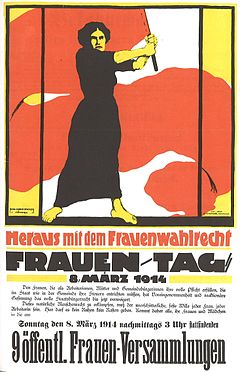
German poster for International Women’s Day, March 8, 1914.[a] This poster was banned in the German Empire.[2] |
|
| Observed by | Worldwide |
| Type | International |
| Significance |
|
| Date | March 8 |
| Next time | March 8, 2023 |
| Frequency | Annual |
International Women’s Day (IWD) is a global holiday celebrated annually on March 8 as a focal point in the women’s rights movement, bringing attention to issues such as gender equality, reproductive rights, and violence and abuse against women.[3][4]
Spurred on by the universal female suffrage movement that had begun in New Zealand, IWD originated from labor movements in North America and Europe during the early 20th century.[5][6][7] The earliest version was purportedly a «Women’s Day» organized by the Socialist Party of America in New York City February 28, 1909. This inspired German delegates at the 1910 International Socialist Women’s Conference to propose «a special Women’s Day» be organized annually, albeit with no set date;[8] the following year saw the first demonstrations and commemorations of International Women’s Day across Europe. After women gained suffrage in Soviet Russia in 1917 (the beginning of the February Revolution), IWD was made a national holiday on March 8;[9][unreliable source?] it was subsequently celebrated on that date by the socialist movement and communist countries. The holiday was associated with far-left movements and governments until its adoption by the global feminist movement in the late 1960s. IWD became a mainstream global holiday following its adoption by the United Nations in 1977.[10]
International Women’s Day is commemorated in a variety of ways worldwide; it is a public holiday in several countries, and observed socially or locally in others to celebrate and promote the achievements of women.[11]
The UN observes the holiday in connection with a particular issue, campaign, or theme in women’s rights.[6] In some parts of the world, IWD still reflects its political origins, being marked by protests and calls for radical change; in other areas, particularly in the West, it is largely sociocultural and centered on a celebration of womanhood.[12]
History[edit]
Origins[edit]
The earliest reported Women’s Day observance, called «National Woman’s Day»,[13] was held on February 28, 1909, in New York City, organized by the Socialist Party of America[14] at the suggestion of activist Theresa Malkiel.[15] There have been claims that the day was commemorating a protest by women garment workers in New York on March 8, 1857, but researchers have alleged this to be a myth intended to detach International Women’s Day from its socialist origin.[16][17][18]
In August 1910, an International Socialist Women’s Conference was organized ahead of the general meeting of the Socialist Second International in Copenhagen, Denmark.[19] Inspired in part by the American socialists, German delegates Clara Zetkin, Käte Duncker, Paula Thiede, and others proposed the establishment of an annual «Women’s Day», although no date was specified.[8][16][20] The 100 delegates, representing 17 countries, agreed with the idea as a strategy to promote equal rights, including women’s suffrage.[21]
The following year, on March 19, 1911, the first International Women’s Day was marked by over a million people in Austria, Denmark, Germany, and Switzerland.[14] In Austria-Hungary alone, there were 300 demonstrations,[16] with women parading on the Ringstrasse in Vienna, carrying banners honoring the martyrs of the Paris Commune.[16] Across Europe, women demanded the right to vote and to hold public office, and protested against employment sex discrimination.[4]
IWD initially had no set date, though it was generally celebrated in late February or early March. Americans continued to observe «National Women’s Day» on the last Sunday in February, while Russia observed International Women’s Day for the first time in 1913, on the last Saturday in February (albeit based on the Julian calendar, as in the Gregorian calendar, the date was March 8).[22] In 1914, International Women’s Day was held on March 8 for the first time in Germany, possibly because that date was a Sunday.[22] As elsewhere, Germany’s observance was dedicated to women’s right to vote, which German women did not win until 1918.[22][23] Concurrently, there was a march in London in support of women’s suffrage, during which Sylvia Pankhurst was arrested in front of Charing Cross station on her way to speak in Trafalgar Square.[24]
Early development in the USSR and other communist nations[edit]
Women’s demonstration for bread and peace, Petrograd, Russia
On March 8, 1917, in Petrograd (February 23, 1917, on the Julian calendar), women textile workers began a demonstration that eventually engulfed the whole city, demanding «Bread and Peace»—an end to World War I, to food shortages, and to czarism.[22] This marked the beginning of the February Revolution, which alongside the October Revolution, made up the second Russian Revolution.[4][25] Revolutionary leader Leon Trotsky wrote, «23 February (8th March) was International Woman’s Day and meetings and actions were foreseen. But we did not imagine that this ‘Women’s Day’ would inaugurate the revolution. Revolutionary actions were foreseen but without a date. But in the morning, despite the orders to the contrary, textile workers left their work in several factories and sent delegates to ask for the support of the strike… which led to mass strike… all went out into the streets.»[22] Seven days later, Tsar Nicholas II abdicated, and the provisional Government granted women the right to vote.[14]
In 1917, Bolsheviks Alexandra Kollontai and Vladimir Lenin made IWD an official holiday in the Soviet Union.[26] On May 8, 1965, the Presidium of the Supreme Soviet decreed International Women’s Day a non-working day in the USSR, «in commemoration of the outstanding merits of Soviet women in communistic construction, in the defense of their Fatherland during the Great Patriotic War, in their heroism and selflessness at the front and in the rear, and also marking the great contribution of women to strengthening friendship between peoples, and the struggle for peace. But still, women’s day must be celebrated as are other holidays.»[26]
After its official adoption in Soviet Russia, IWD was predominantly celebrated in communist countries and by the communist movement worldwide. Communist leader Dolores Ibárruri led a women’s march in Madrid in 1936 on the eve of the Spanish Civil War.[16] Chinese communists observed the holiday beginning in 1922,[16] though it soon gained traction across the political spectrum: In 1927, Guangzhou saw a march of 25,000 women and male supporters, including representatives of the Kuomintang, the YWCA, and labor organizations.[27] After the founding of the People’s Republic of China on October 1, 1949, the State Council proclaimed on December 23 that March 8 would be made an official holiday, with women given a half-day off.[28]
Adoption by United Nations[edit]
Poster for Women’s Day March in London, 1975
British poster for Women’s Day March 1974
IWD remained predominantly a communist holiday until roughly 1967 when it was taken up by second-wave feminists.[16] The day re-emerged as a day of activism, and is sometimes known in Europe as the «Women’s International Day of Struggle». In the 1970s and 1980s, women’s groups were joined by leftists and labor organizations in calling for equal pay, equal economic opportunity, equal legal rights, reproductive rights, subsidized child care, and the prevention of violence against women.[29][30]
The United Nations began celebrating International Women’s Day in 1975, which had been proclaimed the International Women’s Year. In 1977, the United Nations General Assembly invited member states to proclaim March 8 as an official UN holiday for women’s rights and world peace.[31] It has since been commemorated annually by the UN and much of the world, with each year’s observance centered on a particular theme or issue within women’s rights.
International Women’s Day sparked violence in Tehran, Iran on March 4, 2007, when police beat hundreds of men and women who were planning a rally. (A previous rally for the occasion was held in Tehran in 2003.)[32] Police arrested dozens of women and some were released after several days of solitary confinement and interrogation.[33] Shadi Sadr, Mahbubeh Abbasgholizadeh and several more community activists were released on March 19, 2007, ending a fifteen-day hunger strike.[34]
Adoption by corporations[edit]
By the twenty-first century, IWD has been criticized as heavily diluted and commercialized, particularly in the West, where it is sponsored by major corporations and used to promote general and vague notions of equality, rather than radical social reforms.[35] The website internationalwomensday.com was established in 2001; it sets out a yearly theme and hashtags, unconnected with the UN project.[36] In 2009, the website was being managed by the British marketing firm Aurora Ventures with corporate sponsorship.[37][38] The website began to promote hashtags as themes for the day, which became used internationally.[39] The day was commemorated by business breakfasts and social media communications that were deemed by some social critics as reminiscent of Mother’s Day greetings.[35][29]
Yearly commemorations[edit]
2010[edit]
On the occasion of 2010 International Women’s Day the International Committee of the Red Cross (ICRC) drew attention to the hardships displaced women endure. The displacement of populations is one of the gravest consequences of today’s armed conflicts. It affects women in a host of ways.[40] It has been estimated that between 70 and 80% of all internally displaced persons are women and children.[41]
2011[edit]
Though the celebration in the West was low-key, events took place in more than 100 countries[11] on March 8, 2011, to commemorate the 100th anniversary of International Women’s Day.[42] In the United States, President Barack Obama proclaimed March 2011 to be «Women’s History Month», calling Americans to mark IWD by reflecting on «the extraordinary accomplishments of women» in shaping the country’s history.[11] Secretary of State Hillary Clinton launched the «100 Women Initiative: Empowering Women and Girls through International Exchanges», on the eve of IWD.[43] In the run-up to 2011 International Women’s Day, the Red Cross called on States and other entities not to relent in their efforts to prevent rape and other forms of sexual violence that harm the lives and dignity of countless women in conflict zones around the world every year.[44]
Australia issued an IWD 100th anniversary commemorative 20-cent coin.[45]
In the context of the Egyptian revolution, in Tahrir Square, Cairo, hundreds of men came out not to support, but to harass the women who came out to stand up for their rights as the police and military stood by watching, doing nothing to stop the crowds of men.[46]
2012[edit]
Oxfam America invited people to celebrate inspiring women in their lives by sending a free International Women’s Day e-Card or honoring a woman whose efforts had made a difference in the fight against hunger and poverty with Oxfam’s International Women’s Day award.[47]
On the occasion of International Women’s Day 2012, the ICRC called for more action to help the mothers and wives of people who have gone missing during armed conflict. The vast majority of people who go missing in connection with conflict are men. As well as the anguish of not knowing what has happened to the missing husband or son, many of these women face economic and practical difficulties. The ICRC underlined the duty of parties to this conflict to search for the missing and provide information to the families.[48]
2013[edit]
The International Committee of the Red Cross (ICRC) drew attention to the plight of women in prison.[49]
The theme for International Women’s Day 2013 was «A promise is a promise: time for action to end violence against women.»[50]
It was reported the 70% of women worldwide experience some sort of physical and/or sexual violence in their life. Irina Bovoka, UNESCO Director General on International Women’s day 2013, stated that in order «to empower women and ensure equality, we must challenge every form of violence every time it occurs.»[51] In view of the increase in violence against women and following the brutal attack on Malala Yousafzai in October 2012, the UN focused their attention on ending violence against women and made this the central theme for International Women’s Day 2013. UNESCO acknowledged that violence against young girls was one of the major reasons for girls not attending school and subsequently collaborated with governments around the globe to support women’s rights in providing a quality education in a safe environment.[52]
For a more cultural and artistic celebration, UNESCO also held a concert in Paris as a «Tribute to Women in Music: from the romantic to the electronics».[53]
2014[edit]
American singer Beyoncé posted an International Women’s Day video to her YouTube account. Throughout the video, her song «Flawless» plays, which includes a portion of the «We Should All Be Feminists» speech given by author Chimamanda Ngozi Adichie.[54]
2015[edit]
Governments and activists around the world commemorated the 20th anniversary year of the Beijing Declaration and Platform for Action, an historic roadmap that set the agenda for realizing women’s rights.[55]
2016[edit]
The President of India, Shri Pranab Mukherjee, said: «On the occasion of International Women’s Day, I extend warm greetings and good wishes to the women of India and thank them for their contributions over the years in the building of our nation.»[56] The ministry of women and child development announced the setting up of four more one-stop crisis centers on March 8, in addition to the eight already functioning across the country.[57] Ahead of Women’s Day, the national carrier Air India operated what it claimed to be the world’s longest non-stop flight where the entire flight operations were handled by women, as part of International Women’s Day celebrations. The flight, from Delhi to San Francisco, covered a distance of around 14,500 kilometers in around 17 hours.[58]
2017[edit]
In a message in support of International Women’s Day, the UN Secretary-General António Guterres commented on how women’s rights were being «reduced, restricted and reversed». With men still in leadership positions and a widening economic gender gap, he called for change «by empowering women at all levels, enabling their voices to be heard and giving them control over their own lives and over the future of our world».[59]
2018[edit]
The UN theme for International Women’s Day was: «Time is Now: Rural and urban activists transforming women’s lives».
Global marches and online campaigns such as #MeToo and #TimesUp, which originated in the United States but became popular globally, allowed many women from different parts of the world to confront injustice and speak out on issues such as sexual harassment and assault and the gender pay gap.[60]
2019[edit]
The UN theme for International Women’s Day was: ‘Think equal, build smart, innovate for change’. The focus of the theme was on innovative ways in which to advance gender equality and the empowerment of women, particularly in the areas of social protection systems, access to public services and sustainable infrastructure.[61]
The federal state of Berlin marked International Women’s Day as a public holiday for the first time.
2020[edit]
The UN theme for International Women’s Day was: ‘I am Generation Equality’: Realizing Women’s Rights’.[62] Despite the COVID-19 pandemic, street marches occurred in London, Paris, Madrid, Brussels, Moscow and other European cities.[63][64][65][66] The Aurat March in Islamabad was marred by attacks from stone throwers, after a failed attempt to have it banned as un-Islamic. In Bishkek, the capital of Kyrgyzstan, police detained dozens of marchers shortly after masked men reportedly attacked the march.[63]
2021[edit]
The 2021 UN theme for the IWD was «Women in leadership: Achieving an equal future in a COVID-19 world», highlighting the impact that girls and women worldwide had as health care workers, caregivers, innovators and community organizers during the COVID-19 pandemic.[67] The hashtag theme that year was: #ChooseToChallenge.[68]
2022[edit]
The 2022 UN theme for International Women’s Day is «Gender equality today for a sustainable tomorrow», looking to highlight the contribution of women and girls around the globe, who participate in their communities promoting climate change adaptation, mitigation, and response, in order to build a more sustainable future for all.[69] The hashtag theme for the year is #BreaktheBias[70] and the color is purple.[71]
Around the world[edit]
Official holiday
Holiday for women
Non-official holiday
Women on the street celebrating International Women’s Day in Cameroon
IWD is an official holiday in several countries worldwide, including Afghanistan,[72] Angola, Armenia,[73] Azerbaijan,[74][75] Belarus,[76] Burkina Faso,[77] Cambodia,[78] China (for women only),[79] Cuba,[80] Georgia,[81] Germany (Berlin only),[82] Guinea-Bissau, Eritrea, Kazakhstan,[83] Kyrgyzstan,[84] Laos,[85] Madagascar (for women only),[86] Moldova,[87] Mongolia,[88] Montenegro, Nepal, Russia, Tajikistan, Turkmenistan, Uganda, Ukraine,[89] Uzbekistan,[90] and Zambia.[91]
In some countries, such as Australia,[92] Cameroon,[93] Croatia,[94] Romania,[95] Bosnia and Herzegovina,[96] Bulgaria,[97] Vietnam,[98] and Chile,[99] IWD is not an official public holiday, but is widely observed nonetheless.
Regardless of legal status, in much of the world, it is customary for men and women to give their colleagues and loved ones flowers and gifts and show the equality towards the other gender. In some countries (such as Bulgaria and Romania) it is also observed as an equivalent of Mother’s Day, where children also give small presents to their mothers and grandmothers.[95] In the Czechoslovak Socialist Republic, huge Soviet-style celebrations were held annually. After the fall of Communism, the holiday, generally considered to be one of the major symbols of the old regime, fell into obscurity. International Women’s Day was re-established as an official «important day» by the Parliament of the Czech Republic in 2004[100] on the proposal of the Social Democrats and Communists. This has provoked some controversy as a large part of the public as well as the political right see the holiday as a relic of the nation’s Communist past.[100]
IWD is widely celebrated in France as Journée internationale des droits des femmes[101] (literally «International women’s rights day»).
In Italy, the holiday is observed by men giving yellow mimosas to women.[102][103] This originated with communist politician Teresa Mattei, who chose the mimosa in 1946 as the symbol of IWD[104] at the request of Luigi Longo.[105] Mattei felt that the French symbols of IWD, violets and lilies of the valley, were too scarce and expensive to be used in poor, rural Italian areas, so she proposed the mimosa as an alternative.[106][107][105]
In the United States, actress and human rights activist Beata Pozniak worked with the Mayor of Los Angeles and the Governor of California to lobby members of the US Congress to propose official recognition of the holiday. In February 1994, at Beata Pozniak’s suggestion, H. J. Res. 316 was introduced by Representative Maxine Waters, along with 79 cosponsors, in an attempt to officially recognize March 8 of that year as International Women’s Day. The bill was subsequently referred to, and remained in, the House Committee on Post Office and Civil Service. No vote of either house of Congress was achieved on this piece of legislation.[108]
In Pakistan, the first Aurat Marches were begun by women’s collectives in parallel with the Pakistani #MeToo movement on International Women’s Day.[109][110][111] The first march was held on 8 March 2018 in Karachi.[112][113] The Aurat March is now an annual socio-political demonstration in Pakistani cities such as Lahore, Hyderabad, Sukkur, Faisalabad, Multan, Quetta, Karachi, Islamabad and Peshawar to observe International Women’s Day.[114][115]
Several countries, including Uruguay, Spain, Italy, France and Algeria, have squares or other public spaces named after 8 March in reference to International Women’s Day.[116][117][118][119]
Official United Nations themes[edit]
| Year | UN theme[120] |
|---|---|
| 1996 | Celebrating the Past, Planning for the Future |
| 1997 | Women and the Peace Table |
| 1998 | Women and Human Rights |
| 1999 | World Free of Violence Against Women |
| 2000 | Women Uniting for Peace |
| 2001 | Women and Peace: Women Managing Conflicts |
| 2002 | Afghan Women Today: Realities and Opportunities |
| 2003 | Gender Equality and the Millennium Development Goals |
| 2004 | Women and HIV/AIDS |
| 2005 | Gender Equality Beyond 2005; Building a More Secure Future |
| 2006 | Women in Decision-making |
| 2007 | Ending Impunity for Violence Against Women and Girls |
| 2008 | Investing in Women and Girls |
| 2009 | Women and Men United to End Violence Against Women and Girls |
| 2010 | Equal Rights, Equal Opportunities: Progress for All |
| 2011 | Equal Access to Education, Training, and Science and Technology: Pathway to Decent Work for Women |
| 2012 | Empower Rural Women, End Poverty, and Hunger |
| 2013 | A Promise is a Promise: Time for Action to End Violence Against Women |
| 2014 | Equality for Women is Progress for All |
| 2015 | Empowering Women, Empowering Humanity: Picture it! |
| 2016 | Planet 50–50 by 2030: Step It Up for Gender Equality |
| 2017 | Women in the Changing World of Work: Planet 50-50 by 2030 |
| 2018 | Time is Now: Rural and urban activists transforming women’s lives |
| 2019 | Think Equal, Build Smart, Innovate for Change |
| 2020 | «I am Generation Equality: Realizing Women’s Rights» |
| 2021 | Women in leadership: Achieving an equal future in a COVID-19 world |
| 2022 | Gender equality today for a sustainable tomorrow |
See also[edit]
- Communist Women’s International
- Day Without a Woman
- International Day for the Elimination of Violence against Women (November 25)
- International Day of Zero Tolerance for Female Genital Mutilation (February 6)
- International Day of the Girl Child (October 11)
- International Men’s Day (November 19)
- International Non-Binary People’s Day (July 14)
- List of uprisings led by women
- National Women’s Day (disambiguation)
- UN Women
- Women’s empowerment
- Women’s March (disambiguation)
- Women’s strike (disambiguation)
- Aurat March (in Pakistan)
- International Day of Women and Girls in Science (February 11)[121]
Other holidays honoring women[edit]
- Rosa Parks Day (February 4 / December 1, US)
- National Girls and Women in Sports Day (one day first week of February, US)
- Susan B. Anthony Day (February 15, US)
- Hinamatsuri (March 3, Japan, although it is for girls)
- Harriet Tubman Day (March 10, US)
- Kartini Day (April 21, Indonesia)
- Mother’s Day
- Helen Keller Day (June 27, US)
- National Women’s Day (South Africa) (August 9)
- Women’s Equality Day (August 26, US)
- Ada Lovelace Day (second Tuesday in October)
- Nupi Lan Day (December 12, India)
Notes[edit]
- ^ English : «Give Us Women’s Suffrage. Women’s Day, March 8, 1914. Until now, prejudice and reactionary attitudes have denied full civic rights to women, who as workers, mothers, and citizens wholly fulfill their duty, who must pay their taxes to the state as well as the municipality. Fighting for this natural human right must be the firm, unwavering intention of every woman, every female worker. In this, no pause for rest, no respite is allowed. Come all, you women and girls, to the ninth public women’s assembly on Sunday, March 8, 1914, at 3 pm»[1]
References[edit]
- ^ «Give Us Women’s Suffrage (March 1914)». German History in Documents and Images. Retrieved January 26, 2014.
- ^ Frencia, Cintia; Gaido, Daniel (March 8, 2017). «The Socialist Origins of International Women’s Day». Jacobin.
- ^ «About International Women’s Day». International Women’s Day. Retrieved March 8, 2021.
- ^ a b c Nations, United. «International Women’s Day». United Nations. Retrieved March 8, 2021.
- ^ «History of International Women’s Day». International Women’s Day. Retrieved March 8, 2021.
- ^ a b Nations, United. «Background | International Women’s Day». United Nations. Retrieved March 8, 2021.
- ^ «Stories of women’s activism». nzhistory.govt.nz. Retrieved February 18, 2022.
- ^ a b ««International Socialist Congress, 1910; Second International Conference of Socialist Women». p. 21. Retrieved March 7, 2020.
- ^ Cheah, S. G. (March 8, 2020). «Women In Red: The Surprising History Of International Women’s Day». Evie Magazine. Archived from the original on March 9, 2020. Retrieved March 9, 2020.
statement made by Vladimir Lenin, who presided over the first official March 8th celebration of this day in Russia: «For under capitalism the female half of the human race is doubly oppressed. The working woman and the peasant woman are oppressed by capital […] «The second and most important step is the abolition of the private ownership of land and the factories. This and this alone opens up the way towards complete and actual emancipation of woman
- ^ «International Women’s Day, 8 March». www.un.org. Retrieved March 7, 2020.
- ^ a b c Sindelar, Daisy. «Women’s Day Largely Forgotten in West, Where It Got Its Start». Radio Free Europe. Radio Free Europe. Retrieved March 8, 2011.
- ^ «International Women’s Day – March 8, 2020». National Today. Retrieved March 6, 2020.
- ^ «International Women’s Day History | International Women’s Day | The University of Chicago». iwd.uchicago.edu. Archived from the original on April 8, 2017. Retrieved April 7, 2017.
- ^ a b c «United Nations page on the background of the IWD». Un.org. Retrieved March 8, 2012.
{{cite web}}: CS1 maint: url-status (link) - ^ Miller, Sally M. (December 1978). «From Sweatshop Worker to Labor Leader: Theresa Malkiel, A Case Study». American Jewish History. 68 (2): 197. JSTOR 23881894.
- ^ a b c d e f g Kaplan, Temma (1985). «On the Socialist Origins of International Women’s Day». Feminist Studies. 11 (1): 163–171. doi:10.2307/3180144. JSTOR 3180144.
- ^ Kandel, Liliane; Picq, Françoise (1982). «Le Mythe des origines à propos de la journée internationale des femmes». La Revue d’en face. 12: 67–80. Archived from the original on September 27, 2013.
- ^ Zophy, Angela Howard (1991). Handbook of American Women’s History. Garland. p. 187. ISBN 0-8240-8744-5.
- ^ Rochelle Goldberg Ruthchild, «From West to East: International Women’s Day, the First Decade», Aspasia: The International Yearbook of Central, Eastern, and Southeastern European Women’s and Gender History, vol. 6 (2012): 1–24.
- ^ «History of International Women’s Day». United Nations. Retrieved May 26, 2012.
- ^ «About International Women’s Day». Internationalwomensday.com. March 8, 1917. Retrieved February 26, 2016.
- ^ a b c d e «8th of March – International woman’s day: in search of lost memory». Archived from the original on March 13, 2011. Retrieved March 14, 2014.
- ^ «Women’s Suffrage». Inter-Parliamentary Union. Retrieved January 26, 2014.
- ^ «Suffragist Disorders». The Times. March 9, 1914. Retrieved May 9, 2014.
- ^ «February Revolution». RIA Novosti. March 6, 2017. Retrieved March 7, 2017.
- ^ a b «How Lenin and Russian Revolution in 1917 played a role in the origin of Women’s Day». www.dailyo.in. Retrieved March 7, 2021.
- ^ Yau Tsit Law (June–July 1927). «International Women’s Day in Canton March 8, 1927». News Bulletin (Institute of Pacific Relations).
- ^ «Anniversaries of important events». China Factfile. Chinese Government. Archived from the original on September 13, 2019. Retrieved August 28, 2011.
- ^ a b Søland, Birgitte (March 4, 2019). «International Women’s Day». Origins.
- ^ Gillis, Elizabeth (January 20, 2017). «Ahead Of The Boston Women’s March, A Look Back 47 Years Ago». WBUR.
- ^ «International Women’s Day». United Nations.
- ^ «Iranian Women Rally to Demand Equal Social, Political Rights» Index-Journal (March 9, 2003): 9. via Newspapers.com
- ^ Harrison, Frances (March 8, 2007). «Middle East | Iranian women struggle for equality». BBC News. Retrieved March 8, 2012.
- ^ «Iran: Release Women’s Rights Advocates | Human Rights Watch». Hrw.org. March 8, 2007. Archived from the original on November 2, 2008. Retrieved March 8, 2012.
- ^ a b Blau, Annika (March 8, 2019). «International Women’s Day went from bloody revolution to corporate breakfasts». ABC.
- ^ Fitzsimmons, Caitlin (March 7, 2020). «Cupcakes and Google juice: the corporate takeover of International Women’s Day». The Sydney Morning Herald. Sydney Morning Herald. Retrieved June 11, 2021.
- ^ «International Women’s Day».
- ^ «Aurora Ventures: Our Work».
- ^ Liddle, Celeste (March 8, 2018). «International Women’s Day is a call to action, not a branding opportunity». SBS.
- ^ «Women and displacement: strength in adversity». International Committee of the Red Cross. March 2, 2010. Retrieved March 8, 2012.
- ^ IDMC (April 2006). INTERNAL DISPLACEMENT Global Overview of Trends and Developments in 2006 (PDF). Geneva: Internal Displacement Monitoring Centre, Norwegian Refugee Council. Archived from the original (PDF) on May 6, 2014. Retrieved May 6, 2014.p. 6
- ^ Pasha, Masroor Afzal. «To commemorate 100th International Women’s Day». Daily Times. Archived from the original on October 25, 2012. Retrieved March 8, 2011.
- ^ McKellogg, JulieAnn. «Clinton Launches 100th Anniversary of International Women’s Day». VOA News. voanews.com. Retrieved March 8, 2011.
- ^ «International Women’s Day: the fight against sexual violence must not falter». Icrc.org. March 7, 2011. Retrieved March 8, 2012.
- ^ «20 Cents — Elizabeth II, Australia». en.numista.com. Retrieved March 7, 2021.
- ^ Al-Shalchi, Hadeel (March 8, 2011). «Egyptian women’s rights protest marred by hecklers». The Washington Post. AP. Retrieved March 8, 2015.
- ^ «International Women’s Day Celebration». Actfast.oxfamamerica.org. Retrieved March 8, 2012.
- ^ Helping women take matters into their own hands International Committee of the Red Cross
- ^ «The forgotten plight of women behind bars». ICRC. March 7, 2013. Retrieved March 8, 2013.
- ^ «International Women’s Day 2013».
- ^ «International Women’s Day 2013 | United Nations Educational, Scientific and Cultural Organization».
- ^ «International Women’s Day 2013 | United Nations Educational, Scientific and Cultural Organization».
- ^ «International Women’s Day 2013 | United Nations Educational, Scientific and Cultural Organization».
- ^ Eliana Dockterman. «Beyoncé: Lessons in Modern Feminism». TIME.com. Retrieved March 9, 2016.
- ^ «The Beijing Platform for Action, inspiration then and now | Beijing+20 campaign». UN Women. Retrieved February 11, 2015.
- ^ «President of Indias message on the eve of International Women’s Day». Business Standard India. Delhi. March 7, 2016.
- ^ «Women’s Day gift: Govt to come with 4 one-stop crisis centres». The Times of India. March 7, 2016.
- ^ PTI (March 7, 2016). «Ahead of Women’s Day, Air India operates ‘world’s longest all-women flight’«. The Indian Express.
- ^ «UN Secretary-General’s Message for International Women’s Day». UN. March 6, 2017. Retrieved March 8, 2017.
- ^ «International Women’s Day 2018».
- ^ «International Women’s Day 2019: Think equal, build smart, innovate for change». unwomen.org. UN Women. October 16, 2018. Retrieved March 8, 2019.
- ^ «International Women’s Day 2020». UNWomen.
- ^ a b «International Women’s Day: Marchers around the world call for equality». BBC News. March 8, 2020.
- ^ «Thousands March in Spain on Women’s Day Despite Coronavirus Fears». US News. Reuters. March 8, 2020.
- ^ «International Women’s Day Marked Across the World». VOA News. March 8, 2020.
- ^ «International Women’s Day 2020 around the world – in pictures». The Guardian. March 8, 2020.
- ^ «International Women’s Day 2021». UNWomen. Retrieved January 15, 2021.
- ^ Cox, Kaanita Iyer and Chelsey. «#ChooseToChallenge is the theme for International Women’s Day 2021. Here’s what you should know». USA Today. Retrieved March 8, 2022.
- ^ «International Women’s Day 2022: «Gender equality today for a sustainable tomorrow»«. UN Women. Retrieved February 11, 2022.
- ^ «IWD 2022 campaign theme: #BreakTheBias». International Women’s Day. Retrieved March 11, 2022.
- ^ «IWD 2022 campaign theme: #BreakTheBias». International Women’s Day. Retrieved March 11, 2022.
- ^ Saul, Heather (March 8, 2018). «International Women’s Day around the world: from sex worker strikes to women-only public holidays». News The Essential Daily Briefing. Retrieved March 20, 2018.
- ^ «Armenian Holidays – Armenia Information». Armeniainfo.am. July 5, 1995. Archived from the original on May 12, 2012. Retrieved March 8, 2012.
- ^ Azerbaijan.msntour.az Archived September 12, 2008, at the Wayback Machine
- ^ «Public Holidays in Azerbaijan – International Women’s Day». advantour.com. Retrieved March 9, 2016.
- ^ (in Russian) President’s decree on public holidays in Belarus – 1998
- ^ Coordination Team (May 22, 2011). «Taking International Women’s Day Seriously in Burkina Faso». capacity4dev.ec.europa.eu. Development and Cooperation – EuropeAid. Retrieved March 8, 2014.
- ^ «2007 Cambodia Public Holiday – Cambodia e-Visa Blog». Cambodiaevisa.com. August 4, 2007. Archived from the original on April 25, 2012. Retrieved March 8, 2012.
- ^ «Public holidays in the People’s Republic of China». Sg2.mofcom.gov.cn. January 9, 2008. Archived from the original on September 3, 2014. Retrieved March 8, 2013.
- ^ «Ministerio de Relaciones Exteriores de Cuba». Cubaminrex.cu. March 8, 2011. Archived from the original on March 16, 2012. Retrieved March 8, 2012.
- ^ «დღესასწაულები». Embassy.mfa.gov.ge. Archived from the original on March 6, 2012. Retrieved March 8, 2012.
- ^ «Green light for new public holiday in Berlin». berlin.de. Retrieved March 8, 2021.
{{cite web}}: CS1 maint: url-status (link) - ^ «Holidays and weekends in the Republic of Kazakhstan in 2014 year». E.gov.kz. Retrieved March 7, 2014.
- ^ «Kyrgyz and American Holidays (In Russian)». US Embassy Bishkek. Archived from the original on May 9, 2012. Retrieved March 7, 2012.
- ^ «Lao Cultural Events / Public Holidays». laoyp.com. Archived from the original on August 29, 2008. Retrieved March 7, 2014.
- ^ «Madagascar 2009 Public Holidays». Qppstudio.net. Archived from the original on April 19, 2012. Retrieved March 8, 2012.
- ^ (in Romanian) Article 111 (1c) of the work codex of Moldova Archived March 3, 2016, at the Wayback Machine, PDF, page 53 «Article 111. Non-working holidays. (1) in Moldova, non-working holidays, maintaining the average salary, are: (…) c) March 8 – International Women’s Day; (…)».
- ^ «Mongolia Web News». Mongolia-web.com. Archived from the original on April 2, 2015. Retrieved March 8, 2012.
- ^ Women Demand Equal Rights In Kyiv March, RFE/RL (March 8, 2018)
- ^ «National Holidays (In Russian)». Ministry of Foreign Affairs of the Republic of Uzbekistan. Archived from the original on March 8, 2012. Retrieved March 7, 2012.
- ^ «Zambia 2009 Public Holidays». Qppstudio.net. Archived from the original on April 19, 2012. Retrieved March 8, 2012.
- ^ «International Womens Development Agency (in English)». Retrieved March 8, 2021.
- ^ «QPPstudio.net». QPPstudio.net. Archived from the original on April 19, 2012. Retrieved March 8, 2012.
- ^ (in Croatian) Zakon o blagdanima, spomendanima i neradnim danima u Republici Hrvatskoj
- ^ a b «Ziua Internațională a Femeii. De 8 martie Google posteaza un desen pentru acest eveniment». Agentia.org. November 24, 2010. Archived from the original on March 11, 2011. Retrieved March 8, 2012.
- ^ «Žene su heroji ovog društva (in Bosnian)». Oslobodjenje. March 8, 2012. Retrieved March 8, 2012.
- ^ «Bulgarian national radio». Bulgarian national radio.
- ^ «Hanoi streets jammed on Int’l Day for Women | Vietnam News & Information Portal». En.www.info.vn. March 9, 2011. Archived from the original on March 12, 2011. Retrieved March 8, 2012.
- ^ «Días Nacionales en Chile (in Spanish)». feriadoschilenos.cl. March 8, 2009. Retrieved March 8, 2012.
- ^ a b Karen Kapusta‐Pofahl. «Reinstating International Women’s Day in the Czech Republic: Feminism, Politics and the Specter of Communism». Washburn University. Retrieved February 28, 2016.
- ^ «8 mars 2022 : pour une Europe de l’égalité». Ministère chargé de l’égalité entre les femmes et les hommes, de la diversité et de l’égalité des chances (in French). Retrieved March 10, 2022.
- ^ «la Repubblica/societa: 8 marzo, niente manifestazione tante feste diverse per le donne». Repubblica.it. Retrieved March 8, 2012.
- ^ «politica » Festa della donna, parla Ciampi «La parità è ancora lontana»«. Repubblica.it. March 8, 2006. Retrieved March 8, 2012.
- ^ Redazione Il Fatto Quotidiano (March 12, 2013). «Addio a Teresa Mattei, era l’ultima donna rimasta tra le elette alla Costituente». Il Fatto (in Italian). Retrieved March 30, 2013.
- ^ a b Pirro, Dierdre (March 25, 2013). «Teresa Mattei, Flower power». The Florentine. Retrieved April 1, 2013.
- ^ Pacini, Patrizia (2011). La costituente: storia di Teresa Mattei (in Italian). Altreconomia, 2011. ISBN 978-8865160411.
- ^ Fantone, Laura; Franciosi, Ippolita (2005). (R)Esistenze: il passaggio della staffetta (in Italian). Morgana. ISBN 8889033312.
- ^ «Bill Summary & Status 103rd Congress (1993–1994) H.J.RES.316». Library of Congress. Archived from the original on July 3, 2016. Retrieved March 8, 2012.
- ^ Anjum, Gulnaz (February 27, 2020). «Women’s Activism in Pakistan: Role of Religious Nationalism and Feminist Ideology Among Self-Identified Conservatives and Liberals». Open Cultural Studies. 4 (1): 36–49. doi:10.1515/culture-2020-0004.
- ^ Shaheed, Farida (2019). «Maintaining Momentum in Changing Circumstances». Journal of International Affairs. 72 (2): 159–172. ISSN 0022-197X. JSTOR 26760840.
- ^ «Social constructionism and women empowerment». Daily Times. March 12, 2020. Retrieved March 15, 2020.
- ^ «Pakistani women hold ‘aurat march’ for equality, gender justice». www.aljazeera.com. Retrieved March 16, 2019.
- ^ Images Staff (March 7, 2019). «The Aurat March challenges misogyny in our homes, workplaces and society, say organisers ahead of Women’s Day». Images. Retrieved March 7, 2019.
- ^ Gozdecka, Dorota; Macduff, Anne (January 8, 2019). Feminism, Postfeminism and Legal Theory: Beyond the Gendered Subject?. Routledge. ISBN 9781351040402.
Kirmani, Nida; Khan, Ayesha (November 27, 2018). «Moving Beyond the Binary: Gender-based Activism in Pakistan».
Sahar, Naila (October 2, 2018). «Things She Could Never Have». South Asian Review. 39 (3–4): 420–422. doi:10.1080/02759527.2018.1518037. ISSN 0275-9527. S2CID 189186159.
Images Staff (March 7, 2019). «The Aurat March challenges misogyny in our homes, workplaces and society, say organisers ahead of Women’s Day». Images. Retrieved March 7, 2019.
«Here’s all you need to know about Aurat March 2019». NC. February 28, 2019. Archived from the original on April 3, 2019. Retrieved March 9, 2019.
The Newspaper’s Staff Reporter (March 7, 2019). «Aurat March to highlight ‘Sisterhood and Solidarity’«. DAWN.COM. Retrieved March 7, 2019.{{cite web}}: CS1 maint: url-status (link)
Shah, Zuneera (March 12, 2018). «Why the Aurat March is a revolutionary feat for Pakistan». DAWN.COM. Retrieved March 17, 2019.
Zahra-Malik, Mehreen (March 15, 2019). «Pakistan torn as women’s day march sparks wave of ‘masculine anxiety’«. The Guardian. ISSN 0261-3077. Retrieved March 16, 2019.
Toppa, Sabrina (March 8, 2019). «Women take to the streets of Pakistan to rewrite their place in society». The Guardian. Retrieved March 17, 2019.
Ebrahim, Ammar (April 6, 2019). «The ‘womanspreading’ placard that caused fury in Pakistan». Retrieved April 13, 2019.
Rehman, Zoya (July 26, 2019). «Aurat March and Undisciplined Bodies». Medium. Retrieved March 4, 2020. - ^ ur-Rehman, Zia (March 6, 2022). «As Women’s Marches Gain Steam in Pakistan, Conservatives Grow Alarmed». The New York Times. ISSN 0362-4331. Retrieved March 7, 2022.
- ^ «Plaza 8 de marzo (Becú Sur) | Intendencia de Canelones». www.imcanelones.gub.uy. Retrieved March 8, 2022.
- ^ «Pari opportunità: apposta una targa in memoria di Giulia Porcelli in piazza 8 marzo Le foto». BisceglieLive.it (in Italian). March 15, 2021. Retrieved March 8, 2022.
- ^ «La praza 8 de Marzo se teñirá de morado durante el Apóstol». www.elcorreogallego.es (in European Spanish). Retrieved March 8, 2022.
- ^ Catania, Gianni (March 5, 2020). «Nasce piazza 8 Marzo, a Melilli la toponomastica omaggia le donne». SiracusaOggi.it (in Italian). Retrieved March 8, 2022.
- ^ «WomenWatch: International Women’s Day». Un.org. Retrieved February 21, 2013.
- ^ «Holidays and Observances in February». The Spruce. Retrieved September 15, 2020.
Further reading[edit]
- «The socialist roots of International Women’s Day». Al Jazeera America. March 7, 2015
- Ruthchild, Rochelle Goldberg (2012). «From West to East: International Women’s Day, the First Decade». Aspasia. 6: 1–24. doi:10.3167/asp.2012.060102.
External links[edit]
- UN Women, International Women’s Day page
| International Women’s Day | |
|---|---|

German poster for International Women’s Day, March 8, 1914.[a] This poster was banned in the German Empire.[2] |
|
| Observed by | Worldwide |
| Type | International |
| Significance |
|
| Date | March 8 |
| Next time | March 8, 2023 |
| Frequency | Annual |
International Women’s Day (IWD) is a global holiday celebrated annually on March 8 as a focal point in the women’s rights movement, bringing attention to issues such as gender equality, reproductive rights, and violence and abuse against women.[3][4]
Spurred on by the universal female suffrage movement that had begun in New Zealand, IWD originated from labor movements in North America and Europe during the early 20th century.[5][6][7] The earliest version was purportedly a «Women’s Day» organized by the Socialist Party of America in New York City February 28, 1909. This inspired German delegates at the 1910 International Socialist Women’s Conference to propose «a special Women’s Day» be organized annually, albeit with no set date;[8] the following year saw the first demonstrations and commemorations of International Women’s Day across Europe. After women gained suffrage in Soviet Russia in 1917 (the beginning of the February Revolution), IWD was made a national holiday on March 8;[9][unreliable source?] it was subsequently celebrated on that date by the socialist movement and communist countries. The holiday was associated with far-left movements and governments until its adoption by the global feminist movement in the late 1960s. IWD became a mainstream global holiday following its adoption by the United Nations in 1977.[10]
International Women’s Day is commemorated in a variety of ways worldwide; it is a public holiday in several countries, and observed socially or locally in others to celebrate and promote the achievements of women.[11]
The UN observes the holiday in connection with a particular issue, campaign, or theme in women’s rights.[6] In some parts of the world, IWD still reflects its political origins, being marked by protests and calls for radical change; in other areas, particularly in the West, it is largely sociocultural and centered on a celebration of womanhood.[12]
History[edit]
Origins[edit]
The earliest reported Women’s Day observance, called «National Woman’s Day»,[13] was held on February 28, 1909, in New York City, organized by the Socialist Party of America[14] at the suggestion of activist Theresa Malkiel.[15] There have been claims that the day was commemorating a protest by women garment workers in New York on March 8, 1857, but researchers have alleged this to be a myth intended to detach International Women’s Day from its socialist origin.[16][17][18]
In August 1910, an International Socialist Women’s Conference was organized ahead of the general meeting of the Socialist Second International in Copenhagen, Denmark.[19] Inspired in part by the American socialists, German delegates Clara Zetkin, Käte Duncker, Paula Thiede, and others proposed the establishment of an annual «Women’s Day», although no date was specified.[8][16][20] The 100 delegates, representing 17 countries, agreed with the idea as a strategy to promote equal rights, including women’s suffrage.[21]
The following year, on March 19, 1911, the first International Women’s Day was marked by over a million people in Austria, Denmark, Germany, and Switzerland.[14] In Austria-Hungary alone, there were 300 demonstrations,[16] with women parading on the Ringstrasse in Vienna, carrying banners honoring the martyrs of the Paris Commune.[16] Across Europe, women demanded the right to vote and to hold public office, and protested against employment sex discrimination.[4]
IWD initially had no set date, though it was generally celebrated in late February or early March. Americans continued to observe «National Women’s Day» on the last Sunday in February, while Russia observed International Women’s Day for the first time in 1913, on the last Saturday in February (albeit based on the Julian calendar, as in the Gregorian calendar, the date was March 8).[22] In 1914, International Women’s Day was held on March 8 for the first time in Germany, possibly because that date was a Sunday.[22] As elsewhere, Germany’s observance was dedicated to women’s right to vote, which German women did not win until 1918.[22][23] Concurrently, there was a march in London in support of women’s suffrage, during which Sylvia Pankhurst was arrested in front of Charing Cross station on her way to speak in Trafalgar Square.[24]
Early development in the USSR and other communist nations[edit]
Women’s demonstration for bread and peace, Petrograd, Russia
On March 8, 1917, in Petrograd (February 23, 1917, on the Julian calendar), women textile workers began a demonstration that eventually engulfed the whole city, demanding «Bread and Peace»—an end to World War I, to food shortages, and to czarism.[22] This marked the beginning of the February Revolution, which alongside the October Revolution, made up the second Russian Revolution.[4][25] Revolutionary leader Leon Trotsky wrote, «23 February (8th March) was International Woman’s Day and meetings and actions were foreseen. But we did not imagine that this ‘Women’s Day’ would inaugurate the revolution. Revolutionary actions were foreseen but without a date. But in the morning, despite the orders to the contrary, textile workers left their work in several factories and sent delegates to ask for the support of the strike… which led to mass strike… all went out into the streets.»[22] Seven days later, Tsar Nicholas II abdicated, and the provisional Government granted women the right to vote.[14]
In 1917, Bolsheviks Alexandra Kollontai and Vladimir Lenin made IWD an official holiday in the Soviet Union.[26] On May 8, 1965, the Presidium of the Supreme Soviet decreed International Women’s Day a non-working day in the USSR, «in commemoration of the outstanding merits of Soviet women in communistic construction, in the defense of their Fatherland during the Great Patriotic War, in their heroism and selflessness at the front and in the rear, and also marking the great contribution of women to strengthening friendship between peoples, and the struggle for peace. But still, women’s day must be celebrated as are other holidays.»[26]
After its official adoption in Soviet Russia, IWD was predominantly celebrated in communist countries and by the communist movement worldwide. Communist leader Dolores Ibárruri led a women’s march in Madrid in 1936 on the eve of the Spanish Civil War.[16] Chinese communists observed the holiday beginning in 1922,[16] though it soon gained traction across the political spectrum: In 1927, Guangzhou saw a march of 25,000 women and male supporters, including representatives of the Kuomintang, the YWCA, and labor organizations.[27] After the founding of the People’s Republic of China on October 1, 1949, the State Council proclaimed on December 23 that March 8 would be made an official holiday, with women given a half-day off.[28]
Adoption by United Nations[edit]
Poster for Women’s Day March in London, 1975
British poster for Women’s Day March 1974
IWD remained predominantly a communist holiday until roughly 1967 when it was taken up by second-wave feminists.[16] The day re-emerged as a day of activism, and is sometimes known in Europe as the «Women’s International Day of Struggle». In the 1970s and 1980s, women’s groups were joined by leftists and labor organizations in calling for equal pay, equal economic opportunity, equal legal rights, reproductive rights, subsidized child care, and the prevention of violence against women.[29][30]
The United Nations began celebrating International Women’s Day in 1975, which had been proclaimed the International Women’s Year. In 1977, the United Nations General Assembly invited member states to proclaim March 8 as an official UN holiday for women’s rights and world peace.[31] It has since been commemorated annually by the UN and much of the world, with each year’s observance centered on a particular theme or issue within women’s rights.
International Women’s Day sparked violence in Tehran, Iran on March 4, 2007, when police beat hundreds of men and women who were planning a rally. (A previous rally for the occasion was held in Tehran in 2003.)[32] Police arrested dozens of women and some were released after several days of solitary confinement and interrogation.[33] Shadi Sadr, Mahbubeh Abbasgholizadeh and several more community activists were released on March 19, 2007, ending a fifteen-day hunger strike.[34]
Adoption by corporations[edit]
By the twenty-first century, IWD has been criticized as heavily diluted and commercialized, particularly in the West, where it is sponsored by major corporations and used to promote general and vague notions of equality, rather than radical social reforms.[35] The website internationalwomensday.com was established in 2001; it sets out a yearly theme and hashtags, unconnected with the UN project.[36] In 2009, the website was being managed by the British marketing firm Aurora Ventures with corporate sponsorship.[37][38] The website began to promote hashtags as themes for the day, which became used internationally.[39] The day was commemorated by business breakfasts and social media communications that were deemed by some social critics as reminiscent of Mother’s Day greetings.[35][29]
Yearly commemorations[edit]
2010[edit]
On the occasion of 2010 International Women’s Day the International Committee of the Red Cross (ICRC) drew attention to the hardships displaced women endure. The displacement of populations is one of the gravest consequences of today’s armed conflicts. It affects women in a host of ways.[40] It has been estimated that between 70 and 80% of all internally displaced persons are women and children.[41]
2011[edit]
Though the celebration in the West was low-key, events took place in more than 100 countries[11] on March 8, 2011, to commemorate the 100th anniversary of International Women’s Day.[42] In the United States, President Barack Obama proclaimed March 2011 to be «Women’s History Month», calling Americans to mark IWD by reflecting on «the extraordinary accomplishments of women» in shaping the country’s history.[11] Secretary of State Hillary Clinton launched the «100 Women Initiative: Empowering Women and Girls through International Exchanges», on the eve of IWD.[43] In the run-up to 2011 International Women’s Day, the Red Cross called on States and other entities not to relent in their efforts to prevent rape and other forms of sexual violence that harm the lives and dignity of countless women in conflict zones around the world every year.[44]
Australia issued an IWD 100th anniversary commemorative 20-cent coin.[45]
In the context of the Egyptian revolution, in Tahrir Square, Cairo, hundreds of men came out not to support, but to harass the women who came out to stand up for their rights as the police and military stood by watching, doing nothing to stop the crowds of men.[46]
2012[edit]
Oxfam America invited people to celebrate inspiring women in their lives by sending a free International Women’s Day e-Card or honoring a woman whose efforts had made a difference in the fight against hunger and poverty with Oxfam’s International Women’s Day award.[47]
On the occasion of International Women’s Day 2012, the ICRC called for more action to help the mothers and wives of people who have gone missing during armed conflict. The vast majority of people who go missing in connection with conflict are men. As well as the anguish of not knowing what has happened to the missing husband or son, many of these women face economic and practical difficulties. The ICRC underlined the duty of parties to this conflict to search for the missing and provide information to the families.[48]
2013[edit]
The International Committee of the Red Cross (ICRC) drew attention to the plight of women in prison.[49]
The theme for International Women’s Day 2013 was «A promise is a promise: time for action to end violence against women.»[50]
It was reported the 70% of women worldwide experience some sort of physical and/or sexual violence in their life. Irina Bovoka, UNESCO Director General on International Women’s day 2013, stated that in order «to empower women and ensure equality, we must challenge every form of violence every time it occurs.»[51] In view of the increase in violence against women and following the brutal attack on Malala Yousafzai in October 2012, the UN focused their attention on ending violence against women and made this the central theme for International Women’s Day 2013. UNESCO acknowledged that violence against young girls was one of the major reasons for girls not attending school and subsequently collaborated with governments around the globe to support women’s rights in providing a quality education in a safe environment.[52]
For a more cultural and artistic celebration, UNESCO also held a concert in Paris as a «Tribute to Women in Music: from the romantic to the electronics».[53]
2014[edit]
American singer Beyoncé posted an International Women’s Day video to her YouTube account. Throughout the video, her song «Flawless» plays, which includes a portion of the «We Should All Be Feminists» speech given by author Chimamanda Ngozi Adichie.[54]
2015[edit]
Governments and activists around the world commemorated the 20th anniversary year of the Beijing Declaration and Platform for Action, an historic roadmap that set the agenda for realizing women’s rights.[55]
2016[edit]
The President of India, Shri Pranab Mukherjee, said: «On the occasion of International Women’s Day, I extend warm greetings and good wishes to the women of India and thank them for their contributions over the years in the building of our nation.»[56] The ministry of women and child development announced the setting up of four more one-stop crisis centers on March 8, in addition to the eight already functioning across the country.[57] Ahead of Women’s Day, the national carrier Air India operated what it claimed to be the world’s longest non-stop flight where the entire flight operations were handled by women, as part of International Women’s Day celebrations. The flight, from Delhi to San Francisco, covered a distance of around 14,500 kilometers in around 17 hours.[58]
2017[edit]
In a message in support of International Women’s Day, the UN Secretary-General António Guterres commented on how women’s rights were being «reduced, restricted and reversed». With men still in leadership positions and a widening economic gender gap, he called for change «by empowering women at all levels, enabling their voices to be heard and giving them control over their own lives and over the future of our world».[59]
2018[edit]
The UN theme for International Women’s Day was: «Time is Now: Rural and urban activists transforming women’s lives».
Global marches and online campaigns such as #MeToo and #TimesUp, which originated in the United States but became popular globally, allowed many women from different parts of the world to confront injustice and speak out on issues such as sexual harassment and assault and the gender pay gap.[60]
2019[edit]
The UN theme for International Women’s Day was: ‘Think equal, build smart, innovate for change’. The focus of the theme was on innovative ways in which to advance gender equality and the empowerment of women, particularly in the areas of social protection systems, access to public services and sustainable infrastructure.[61]
The federal state of Berlin marked International Women’s Day as a public holiday for the first time.
2020[edit]
The UN theme for International Women’s Day was: ‘I am Generation Equality’: Realizing Women’s Rights’.[62] Despite the COVID-19 pandemic, street marches occurred in London, Paris, Madrid, Brussels, Moscow and other European cities.[63][64][65][66] The Aurat March in Islamabad was marred by attacks from stone throwers, after a failed attempt to have it banned as un-Islamic. In Bishkek, the capital of Kyrgyzstan, police detained dozens of marchers shortly after masked men reportedly attacked the march.[63]
2021[edit]
The 2021 UN theme for the IWD was «Women in leadership: Achieving an equal future in a COVID-19 world», highlighting the impact that girls and women worldwide had as health care workers, caregivers, innovators and community organizers during the COVID-19 pandemic.[67] The hashtag theme that year was: #ChooseToChallenge.[68]
2022[edit]
The 2022 UN theme for International Women’s Day is «Gender equality today for a sustainable tomorrow», looking to highlight the contribution of women and girls around the globe, who participate in their communities promoting climate change adaptation, mitigation, and response, in order to build a more sustainable future for all.[69] The hashtag theme for the year is #BreaktheBias[70] and the color is purple.[71]
Around the world[edit]
Official holiday
Holiday for women
Non-official holiday
Women on the street celebrating International Women’s Day in Cameroon
IWD is an official holiday in several countries worldwide, including Afghanistan,[72] Angola, Armenia,[73] Azerbaijan,[74][75] Belarus,[76] Burkina Faso,[77] Cambodia,[78] China (for women only),[79] Cuba,[80] Georgia,[81] Germany (Berlin only),[82] Guinea-Bissau, Eritrea, Kazakhstan,[83] Kyrgyzstan,[84] Laos,[85] Madagascar (for women only),[86] Moldova,[87] Mongolia,[88] Montenegro, Nepal, Russia, Tajikistan, Turkmenistan, Uganda, Ukraine,[89] Uzbekistan,[90] and Zambia.[91]
In some countries, such as Australia,[92] Cameroon,[93] Croatia,[94] Romania,[95] Bosnia and Herzegovina,[96] Bulgaria,[97] Vietnam,[98] and Chile,[99] IWD is not an official public holiday, but is widely observed nonetheless.
Regardless of legal status, in much of the world, it is customary for men and women to give their colleagues and loved ones flowers and gifts and show the equality towards the other gender. In some countries (such as Bulgaria and Romania) it is also observed as an equivalent of Mother’s Day, where children also give small presents to their mothers and grandmothers.[95] In the Czechoslovak Socialist Republic, huge Soviet-style celebrations were held annually. After the fall of Communism, the holiday, generally considered to be one of the major symbols of the old regime, fell into obscurity. International Women’s Day was re-established as an official «important day» by the Parliament of the Czech Republic in 2004[100] on the proposal of the Social Democrats and Communists. This has provoked some controversy as a large part of the public as well as the political right see the holiday as a relic of the nation’s Communist past.[100]
IWD is widely celebrated in France as Journée internationale des droits des femmes[101] (literally «International women’s rights day»).
In Italy, the holiday is observed by men giving yellow mimosas to women.[102][103] This originated with communist politician Teresa Mattei, who chose the mimosa in 1946 as the symbol of IWD[104] at the request of Luigi Longo.[105] Mattei felt that the French symbols of IWD, violets and lilies of the valley, were too scarce and expensive to be used in poor, rural Italian areas, so she proposed the mimosa as an alternative.[106][107][105]
In the United States, actress and human rights activist Beata Pozniak worked with the Mayor of Los Angeles and the Governor of California to lobby members of the US Congress to propose official recognition of the holiday. In February 1994, at Beata Pozniak’s suggestion, H. J. Res. 316 was introduced by Representative Maxine Waters, along with 79 cosponsors, in an attempt to officially recognize March 8 of that year as International Women’s Day. The bill was subsequently referred to, and remained in, the House Committee on Post Office and Civil Service. No vote of either house of Congress was achieved on this piece of legislation.[108]
In Pakistan, the first Aurat Marches were begun by women’s collectives in parallel with the Pakistani #MeToo movement on International Women’s Day.[109][110][111] The first march was held on 8 March 2018 in Karachi.[112][113] The Aurat March is now an annual socio-political demonstration in Pakistani cities such as Lahore, Hyderabad, Sukkur, Faisalabad, Multan, Quetta, Karachi, Islamabad and Peshawar to observe International Women’s Day.[114][115]
Several countries, including Uruguay, Spain, Italy, France and Algeria, have squares or other public spaces named after 8 March in reference to International Women’s Day.[116][117][118][119]
Official United Nations themes[edit]
| Year | UN theme[120] |
|---|---|
| 1996 | Celebrating the Past, Planning for the Future |
| 1997 | Women and the Peace Table |
| 1998 | Women and Human Rights |
| 1999 | World Free of Violence Against Women |
| 2000 | Women Uniting for Peace |
| 2001 | Women and Peace: Women Managing Conflicts |
| 2002 | Afghan Women Today: Realities and Opportunities |
| 2003 | Gender Equality and the Millennium Development Goals |
| 2004 | Women and HIV/AIDS |
| 2005 | Gender Equality Beyond 2005; Building a More Secure Future |
| 2006 | Women in Decision-making |
| 2007 | Ending Impunity for Violence Against Women and Girls |
| 2008 | Investing in Women and Girls |
| 2009 | Women and Men United to End Violence Against Women and Girls |
| 2010 | Equal Rights, Equal Opportunities: Progress for All |
| 2011 | Equal Access to Education, Training, and Science and Technology: Pathway to Decent Work for Women |
| 2012 | Empower Rural Women, End Poverty, and Hunger |
| 2013 | A Promise is a Promise: Time for Action to End Violence Against Women |
| 2014 | Equality for Women is Progress for All |
| 2015 | Empowering Women, Empowering Humanity: Picture it! |
| 2016 | Planet 50–50 by 2030: Step It Up for Gender Equality |
| 2017 | Women in the Changing World of Work: Planet 50-50 by 2030 |
| 2018 | Time is Now: Rural and urban activists transforming women’s lives |
| 2019 | Think Equal, Build Smart, Innovate for Change |
| 2020 | «I am Generation Equality: Realizing Women’s Rights» |
| 2021 | Women in leadership: Achieving an equal future in a COVID-19 world |
| 2022 | Gender equality today for a sustainable tomorrow |
See also[edit]
- Communist Women’s International
- Day Without a Woman
- International Day for the Elimination of Violence against Women (November 25)
- International Day of Zero Tolerance for Female Genital Mutilation (February 6)
- International Day of the Girl Child (October 11)
- International Men’s Day (November 19)
- International Non-Binary People’s Day (July 14)
- List of uprisings led by women
- National Women’s Day (disambiguation)
- UN Women
- Women’s empowerment
- Women’s March (disambiguation)
- Women’s strike (disambiguation)
- Aurat March (in Pakistan)
- International Day of Women and Girls in Science (February 11)[121]
Other holidays honoring women[edit]
- Rosa Parks Day (February 4 / December 1, US)
- National Girls and Women in Sports Day (one day first week of February, US)
- Susan B. Anthony Day (February 15, US)
- Hinamatsuri (March 3, Japan, although it is for girls)
- Harriet Tubman Day (March 10, US)
- Kartini Day (April 21, Indonesia)
- Mother’s Day
- Helen Keller Day (June 27, US)
- National Women’s Day (South Africa) (August 9)
- Women’s Equality Day (August 26, US)
- Ada Lovelace Day (second Tuesday in October)
- Nupi Lan Day (December 12, India)
Notes[edit]
- ^ English : «Give Us Women’s Suffrage. Women’s Day, March 8, 1914. Until now, prejudice and reactionary attitudes have denied full civic rights to women, who as workers, mothers, and citizens wholly fulfill their duty, who must pay their taxes to the state as well as the municipality. Fighting for this natural human right must be the firm, unwavering intention of every woman, every female worker. In this, no pause for rest, no respite is allowed. Come all, you women and girls, to the ninth public women’s assembly on Sunday, March 8, 1914, at 3 pm»[1]
References[edit]
- ^ «Give Us Women’s Suffrage (March 1914)». German History in Documents and Images. Retrieved January 26, 2014.
- ^ Frencia, Cintia; Gaido, Daniel (March 8, 2017). «The Socialist Origins of International Women’s Day». Jacobin.
- ^ «About International Women’s Day». International Women’s Day. Retrieved March 8, 2021.
- ^ a b c Nations, United. «International Women’s Day». United Nations. Retrieved March 8, 2021.
- ^ «History of International Women’s Day». International Women’s Day. Retrieved March 8, 2021.
- ^ a b Nations, United. «Background | International Women’s Day». United Nations. Retrieved March 8, 2021.
- ^ «Stories of women’s activism». nzhistory.govt.nz. Retrieved February 18, 2022.
- ^ a b ««International Socialist Congress, 1910; Second International Conference of Socialist Women». p. 21. Retrieved March 7, 2020.
- ^ Cheah, S. G. (March 8, 2020). «Women In Red: The Surprising History Of International Women’s Day». Evie Magazine. Archived from the original on March 9, 2020. Retrieved March 9, 2020.
statement made by Vladimir Lenin, who presided over the first official March 8th celebration of this day in Russia: «For under capitalism the female half of the human race is doubly oppressed. The working woman and the peasant woman are oppressed by capital […] «The second and most important step is the abolition of the private ownership of land and the factories. This and this alone opens up the way towards complete and actual emancipation of woman
- ^ «International Women’s Day, 8 March». www.un.org. Retrieved March 7, 2020.
- ^ a b c Sindelar, Daisy. «Women’s Day Largely Forgotten in West, Where It Got Its Start». Radio Free Europe. Radio Free Europe. Retrieved March 8, 2011.
- ^ «International Women’s Day – March 8, 2020». National Today. Retrieved March 6, 2020.
- ^ «International Women’s Day History | International Women’s Day | The University of Chicago». iwd.uchicago.edu. Archived from the original on April 8, 2017. Retrieved April 7, 2017.
- ^ a b c «United Nations page on the background of the IWD». Un.org. Retrieved March 8, 2012.
{{cite web}}: CS1 maint: url-status (link) - ^ Miller, Sally M. (December 1978). «From Sweatshop Worker to Labor Leader: Theresa Malkiel, A Case Study». American Jewish History. 68 (2): 197. JSTOR 23881894.
- ^ a b c d e f g Kaplan, Temma (1985). «On the Socialist Origins of International Women’s Day». Feminist Studies. 11 (1): 163–171. doi:10.2307/3180144. JSTOR 3180144.
- ^ Kandel, Liliane; Picq, Françoise (1982). «Le Mythe des origines à propos de la journée internationale des femmes». La Revue d’en face. 12: 67–80. Archived from the original on September 27, 2013.
- ^ Zophy, Angela Howard (1991). Handbook of American Women’s History. Garland. p. 187. ISBN 0-8240-8744-5.
- ^ Rochelle Goldberg Ruthchild, «From West to East: International Women’s Day, the First Decade», Aspasia: The International Yearbook of Central, Eastern, and Southeastern European Women’s and Gender History, vol. 6 (2012): 1–24.
- ^ «History of International Women’s Day». United Nations. Retrieved May 26, 2012.
- ^ «About International Women’s Day». Internationalwomensday.com. March 8, 1917. Retrieved February 26, 2016.
- ^ a b c d e «8th of March – International woman’s day: in search of lost memory». Archived from the original on March 13, 2011. Retrieved March 14, 2014.
- ^ «Women’s Suffrage». Inter-Parliamentary Union. Retrieved January 26, 2014.
- ^ «Suffragist Disorders». The Times. March 9, 1914. Retrieved May 9, 2014.
- ^ «February Revolution». RIA Novosti. March 6, 2017. Retrieved March 7, 2017.
- ^ a b «How Lenin and Russian Revolution in 1917 played a role in the origin of Women’s Day». www.dailyo.in. Retrieved March 7, 2021.
- ^ Yau Tsit Law (June–July 1927). «International Women’s Day in Canton March 8, 1927». News Bulletin (Institute of Pacific Relations).
- ^ «Anniversaries of important events». China Factfile. Chinese Government. Archived from the original on September 13, 2019. Retrieved August 28, 2011.
- ^ a b Søland, Birgitte (March 4, 2019). «International Women’s Day». Origins.
- ^ Gillis, Elizabeth (January 20, 2017). «Ahead Of The Boston Women’s March, A Look Back 47 Years Ago». WBUR.
- ^ «International Women’s Day». United Nations.
- ^ «Iranian Women Rally to Demand Equal Social, Political Rights» Index-Journal (March 9, 2003): 9. via Newspapers.com
- ^ Harrison, Frances (March 8, 2007). «Middle East | Iranian women struggle for equality». BBC News. Retrieved March 8, 2012.
- ^ «Iran: Release Women’s Rights Advocates | Human Rights Watch». Hrw.org. March 8, 2007. Archived from the original on November 2, 2008. Retrieved March 8, 2012.
- ^ a b Blau, Annika (March 8, 2019). «International Women’s Day went from bloody revolution to corporate breakfasts». ABC.
- ^ Fitzsimmons, Caitlin (March 7, 2020). «Cupcakes and Google juice: the corporate takeover of International Women’s Day». The Sydney Morning Herald. Sydney Morning Herald. Retrieved June 11, 2021.
- ^ «International Women’s Day».
- ^ «Aurora Ventures: Our Work».
- ^ Liddle, Celeste (March 8, 2018). «International Women’s Day is a call to action, not a branding opportunity». SBS.
- ^ «Women and displacement: strength in adversity». International Committee of the Red Cross. March 2, 2010. Retrieved March 8, 2012.
- ^ IDMC (April 2006). INTERNAL DISPLACEMENT Global Overview of Trends and Developments in 2006 (PDF). Geneva: Internal Displacement Monitoring Centre, Norwegian Refugee Council. Archived from the original (PDF) on May 6, 2014. Retrieved May 6, 2014.p. 6
- ^ Pasha, Masroor Afzal. «To commemorate 100th International Women’s Day». Daily Times. Archived from the original on October 25, 2012. Retrieved March 8, 2011.
- ^ McKellogg, JulieAnn. «Clinton Launches 100th Anniversary of International Women’s Day». VOA News. voanews.com. Retrieved March 8, 2011.
- ^ «International Women’s Day: the fight against sexual violence must not falter». Icrc.org. March 7, 2011. Retrieved March 8, 2012.
- ^ «20 Cents — Elizabeth II, Australia». en.numista.com. Retrieved March 7, 2021.
- ^ Al-Shalchi, Hadeel (March 8, 2011). «Egyptian women’s rights protest marred by hecklers». The Washington Post. AP. Retrieved March 8, 2015.
- ^ «International Women’s Day Celebration». Actfast.oxfamamerica.org. Retrieved March 8, 2012.
- ^ Helping women take matters into their own hands International Committee of the Red Cross
- ^ «The forgotten plight of women behind bars». ICRC. March 7, 2013. Retrieved March 8, 2013.
- ^ «International Women’s Day 2013».
- ^ «International Women’s Day 2013 | United Nations Educational, Scientific and Cultural Organization».
- ^ «International Women’s Day 2013 | United Nations Educational, Scientific and Cultural Organization».
- ^ «International Women’s Day 2013 | United Nations Educational, Scientific and Cultural Organization».
- ^ Eliana Dockterman. «Beyoncé: Lessons in Modern Feminism». TIME.com. Retrieved March 9, 2016.
- ^ «The Beijing Platform for Action, inspiration then and now | Beijing+20 campaign». UN Women. Retrieved February 11, 2015.
- ^ «President of Indias message on the eve of International Women’s Day». Business Standard India. Delhi. March 7, 2016.
- ^ «Women’s Day gift: Govt to come with 4 one-stop crisis centres». The Times of India. March 7, 2016.
- ^ PTI (March 7, 2016). «Ahead of Women’s Day, Air India operates ‘world’s longest all-women flight’«. The Indian Express.
- ^ «UN Secretary-General’s Message for International Women’s Day». UN. March 6, 2017. Retrieved March 8, 2017.
- ^ «International Women’s Day 2018».
- ^ «International Women’s Day 2019: Think equal, build smart, innovate for change». unwomen.org. UN Women. October 16, 2018. Retrieved March 8, 2019.
- ^ «International Women’s Day 2020». UNWomen.
- ^ a b «International Women’s Day: Marchers around the world call for equality». BBC News. March 8, 2020.
- ^ «Thousands March in Spain on Women’s Day Despite Coronavirus Fears». US News. Reuters. March 8, 2020.
- ^ «International Women’s Day Marked Across the World». VOA News. March 8, 2020.
- ^ «International Women’s Day 2020 around the world – in pictures». The Guardian. March 8, 2020.
- ^ «International Women’s Day 2021». UNWomen. Retrieved January 15, 2021.
- ^ Cox, Kaanita Iyer and Chelsey. «#ChooseToChallenge is the theme for International Women’s Day 2021. Here’s what you should know». USA Today. Retrieved March 8, 2022.
- ^ «International Women’s Day 2022: «Gender equality today for a sustainable tomorrow»«. UN Women. Retrieved February 11, 2022.
- ^ «IWD 2022 campaign theme: #BreakTheBias». International Women’s Day. Retrieved March 11, 2022.
- ^ «IWD 2022 campaign theme: #BreakTheBias». International Women’s Day. Retrieved March 11, 2022.
- ^ Saul, Heather (March 8, 2018). «International Women’s Day around the world: from sex worker strikes to women-only public holidays». News The Essential Daily Briefing. Retrieved March 20, 2018.
- ^ «Armenian Holidays – Armenia Information». Armeniainfo.am. July 5, 1995. Archived from the original on May 12, 2012. Retrieved March 8, 2012.
- ^ Azerbaijan.msntour.az Archived September 12, 2008, at the Wayback Machine
- ^ «Public Holidays in Azerbaijan – International Women’s Day». advantour.com. Retrieved March 9, 2016.
- ^ (in Russian) President’s decree on public holidays in Belarus – 1998
- ^ Coordination Team (May 22, 2011). «Taking International Women’s Day Seriously in Burkina Faso». capacity4dev.ec.europa.eu. Development and Cooperation – EuropeAid. Retrieved March 8, 2014.
- ^ «2007 Cambodia Public Holiday – Cambodia e-Visa Blog». Cambodiaevisa.com. August 4, 2007. Archived from the original on April 25, 2012. Retrieved March 8, 2012.
- ^ «Public holidays in the People’s Republic of China». Sg2.mofcom.gov.cn. January 9, 2008. Archived from the original on September 3, 2014. Retrieved March 8, 2013.
- ^ «Ministerio de Relaciones Exteriores de Cuba». Cubaminrex.cu. March 8, 2011. Archived from the original on March 16, 2012. Retrieved March 8, 2012.
- ^ «დღესასწაულები». Embassy.mfa.gov.ge. Archived from the original on March 6, 2012. Retrieved March 8, 2012.
- ^ «Green light for new public holiday in Berlin». berlin.de. Retrieved March 8, 2021.
{{cite web}}: CS1 maint: url-status (link) - ^ «Holidays and weekends in the Republic of Kazakhstan in 2014 year». E.gov.kz. Retrieved March 7, 2014.
- ^ «Kyrgyz and American Holidays (In Russian)». US Embassy Bishkek. Archived from the original on May 9, 2012. Retrieved March 7, 2012.
- ^ «Lao Cultural Events / Public Holidays». laoyp.com. Archived from the original on August 29, 2008. Retrieved March 7, 2014.
- ^ «Madagascar 2009 Public Holidays». Qppstudio.net. Archived from the original on April 19, 2012. Retrieved March 8, 2012.
- ^ (in Romanian) Article 111 (1c) of the work codex of Moldova Archived March 3, 2016, at the Wayback Machine, PDF, page 53 «Article 111. Non-working holidays. (1) in Moldova, non-working holidays, maintaining the average salary, are: (…) c) March 8 – International Women’s Day; (…)».
- ^ «Mongolia Web News». Mongolia-web.com. Archived from the original on April 2, 2015. Retrieved March 8, 2012.
- ^ Women Demand Equal Rights In Kyiv March, RFE/RL (March 8, 2018)
- ^ «National Holidays (In Russian)». Ministry of Foreign Affairs of the Republic of Uzbekistan. Archived from the original on March 8, 2012. Retrieved March 7, 2012.
- ^ «Zambia 2009 Public Holidays». Qppstudio.net. Archived from the original on April 19, 2012. Retrieved March 8, 2012.
- ^ «International Womens Development Agency (in English)». Retrieved March 8, 2021.
- ^ «QPPstudio.net». QPPstudio.net. Archived from the original on April 19, 2012. Retrieved March 8, 2012.
- ^ (in Croatian) Zakon o blagdanima, spomendanima i neradnim danima u Republici Hrvatskoj
- ^ a b «Ziua Internațională a Femeii. De 8 martie Google posteaza un desen pentru acest eveniment». Agentia.org. November 24, 2010. Archived from the original on March 11, 2011. Retrieved March 8, 2012.
- ^ «Žene su heroji ovog društva (in Bosnian)». Oslobodjenje. March 8, 2012. Retrieved March 8, 2012.
- ^ «Bulgarian national radio». Bulgarian national radio.
- ^ «Hanoi streets jammed on Int’l Day for Women | Vietnam News & Information Portal». En.www.info.vn. March 9, 2011. Archived from the original on March 12, 2011. Retrieved March 8, 2012.
- ^ «Días Nacionales en Chile (in Spanish)». feriadoschilenos.cl. March 8, 2009. Retrieved March 8, 2012.
- ^ a b Karen Kapusta‐Pofahl. «Reinstating International Women’s Day in the Czech Republic: Feminism, Politics and the Specter of Communism». Washburn University. Retrieved February 28, 2016.
- ^ «8 mars 2022 : pour une Europe de l’égalité». Ministère chargé de l’égalité entre les femmes et les hommes, de la diversité et de l’égalité des chances (in French). Retrieved March 10, 2022.
- ^ «la Repubblica/societa: 8 marzo, niente manifestazione tante feste diverse per le donne». Repubblica.it. Retrieved March 8, 2012.
- ^ «politica » Festa della donna, parla Ciampi «La parità è ancora lontana»«. Repubblica.it. March 8, 2006. Retrieved March 8, 2012.
- ^ Redazione Il Fatto Quotidiano (March 12, 2013). «Addio a Teresa Mattei, era l’ultima donna rimasta tra le elette alla Costituente». Il Fatto (in Italian). Retrieved March 30, 2013.
- ^ a b Pirro, Dierdre (March 25, 2013). «Teresa Mattei, Flower power». The Florentine. Retrieved April 1, 2013.
- ^ Pacini, Patrizia (2011). La costituente: storia di Teresa Mattei (in Italian). Altreconomia, 2011. ISBN 978-8865160411.
- ^ Fantone, Laura; Franciosi, Ippolita (2005). (R)Esistenze: il passaggio della staffetta (in Italian). Morgana. ISBN 8889033312.
- ^ «Bill Summary & Status 103rd Congress (1993–1994) H.J.RES.316». Library of Congress. Archived from the original on July 3, 2016. Retrieved March 8, 2012.
- ^ Anjum, Gulnaz (February 27, 2020). «Women’s Activism in Pakistan: Role of Religious Nationalism and Feminist Ideology Among Self-Identified Conservatives and Liberals». Open Cultural Studies. 4 (1): 36–49. doi:10.1515/culture-2020-0004.
- ^ Shaheed, Farida (2019). «Maintaining Momentum in Changing Circumstances». Journal of International Affairs. 72 (2): 159–172. ISSN 0022-197X. JSTOR 26760840.
- ^ «Social constructionism and women empowerment». Daily Times. March 12, 2020. Retrieved March 15, 2020.
- ^ «Pakistani women hold ‘aurat march’ for equality, gender justice». www.aljazeera.com. Retrieved March 16, 2019.
- ^ Images Staff (March 7, 2019). «The Aurat March challenges misogyny in our homes, workplaces and society, say organisers ahead of Women’s Day». Images. Retrieved March 7, 2019.
- ^ Gozdecka, Dorota; Macduff, Anne (January 8, 2019). Feminism, Postfeminism and Legal Theory: Beyond the Gendered Subject?. Routledge. ISBN 9781351040402.
Kirmani, Nida; Khan, Ayesha (November 27, 2018). «Moving Beyond the Binary: Gender-based Activism in Pakistan».
Sahar, Naila (October 2, 2018). «Things She Could Never Have». South Asian Review. 39 (3–4): 420–422. doi:10.1080/02759527.2018.1518037. ISSN 0275-9527. S2CID 189186159.
Images Staff (March 7, 2019). «The Aurat March challenges misogyny in our homes, workplaces and society, say organisers ahead of Women’s Day». Images. Retrieved March 7, 2019.
«Here’s all you need to know about Aurat March 2019». NC. February 28, 2019. Archived from the original on April 3, 2019. Retrieved March 9, 2019.
The Newspaper’s Staff Reporter (March 7, 2019). «Aurat March to highlight ‘Sisterhood and Solidarity’«. DAWN.COM. Retrieved March 7, 2019.{{cite web}}: CS1 maint: url-status (link)
Shah, Zuneera (March 12, 2018). «Why the Aurat March is a revolutionary feat for Pakistan». DAWN.COM. Retrieved March 17, 2019.
Zahra-Malik, Mehreen (March 15, 2019). «Pakistan torn as women’s day march sparks wave of ‘masculine anxiety’«. The Guardian. ISSN 0261-3077. Retrieved March 16, 2019.
Toppa, Sabrina (March 8, 2019). «Women take to the streets of Pakistan to rewrite their place in society». The Guardian. Retrieved March 17, 2019.
Ebrahim, Ammar (April 6, 2019). «The ‘womanspreading’ placard that caused fury in Pakistan». Retrieved April 13, 2019.
Rehman, Zoya (July 26, 2019). «Aurat March and Undisciplined Bodies». Medium. Retrieved March 4, 2020. - ^ ur-Rehman, Zia (March 6, 2022). «As Women’s Marches Gain Steam in Pakistan, Conservatives Grow Alarmed». The New York Times. ISSN 0362-4331. Retrieved March 7, 2022.
- ^ «Plaza 8 de marzo (Becú Sur) | Intendencia de Canelones». www.imcanelones.gub.uy. Retrieved March 8, 2022.
- ^ «Pari opportunità: apposta una targa in memoria di Giulia Porcelli in piazza 8 marzo Le foto». BisceglieLive.it (in Italian). March 15, 2021. Retrieved March 8, 2022.
- ^ «La praza 8 de Marzo se teñirá de morado durante el Apóstol». www.elcorreogallego.es (in European Spanish). Retrieved March 8, 2022.
- ^ Catania, Gianni (March 5, 2020). «Nasce piazza 8 Marzo, a Melilli la toponomastica omaggia le donne». SiracusaOggi.it (in Italian). Retrieved March 8, 2022.
- ^ «WomenWatch: International Women’s Day». Un.org. Retrieved February 21, 2013.
- ^ «Holidays and Observances in February». The Spruce. Retrieved September 15, 2020.
Further reading[edit]
- «The socialist roots of International Women’s Day». Al Jazeera America. March 7, 2015
- Ruthchild, Rochelle Goldberg (2012). «From West to East: International Women’s Day, the First Decade». Aspasia. 6: 1–24. doi:10.3167/asp.2012.060102.
External links[edit]
- UN Women, International Women’s Day page
Весна ассоциируется с обновлением, вечной молодостью, и великолепно, что именно на этот период приходится самый женственный праздник в году. Во всех уголках мира 8 Марта звучат поздравления в адрес прекрасной половины человечества. Международный женский день отмечается во многих странах, но особенно он любим в России. Правда, не все знают историю его появления, но этот пробел мы восполним, ну а помимо этой информации вы также узнаете об актуальных традициях, интересных фактах, сможете сохранить открытки, создаваемые специально для нашего сайта, а еще узнаете, что можно интересного подарить милым и очаровательным женщинам.
Этот государственный праздник несколько десятилетий назад имел яркую политическую окраску. В настоящем 8 Марта — лишний повод для мужчин выразить свою безграничную любовь представительницам прекрасного пола.
Содержание
- История возникновения праздника
- Традиции празднования
- Интересные факты
- Идеи подарков
- Подарки любимой женщине:
- Подарки близким родственницам:
- Подарки коллегам, однокурсницам:
- Картинки – поздравительные открытки
- Как сделать подарки своими руками (видео):
- Подарки по мотивам сериала «Друзья» своими руками
- Милые подарки сделанные собственноручно
- Как сделать подарки в стиле Гарри Поттера
История возникновения праздника
Мало кто из современных женщин знает о целях, которые преследовали основательницы этого праздника. В начале XX века все громче стали звучать призывы уравнять в правах представителей обоих полов. Прогрессивно мыслящие женщины начали устраивать демонстрации с самыми разными требованиями. Речь шла о повышении оплаты труда и предоставлении женщинам права голосовать. Первые волны возмущения прокатились по Америке и Европе. Особенно выдающимися лидерами женского движения были Клара Цеткин и Роза Люксембург.
В России праздник появился в 1913 году, причем дата 8 Марта была утверждена немного позже. Официальное международное признание этот день получил в 1975 году, основная идея: женщины всех континентов должны бороться за свои права и мир. Однако постепенно праздник утратил политическую подоплеку, и стал ассоциироваться с весенней теплотой и женским добром.
Хотите порадовать любимую девушку или жену чем-нибудь вкусным и ярким, подарите коробочку с модными пирожными Macaron.
Традиции празднования
Традиционно в этот день проводятся концерты, мужчины вручают цветы и подарки милым представительницам прекрасного пола, невзирая на возраст. В этот день принято поздравлять всех – любимых девушек, жен, мам, бабушек, сестер, дочерей, одноклассниц, однокурсниц, женщин-педагогов, дам-коллег по работе, и вообще всех женщин из своего окружения! Естественно, всем без исключения подарки не дарятся, порой достаточно будет устного поздравления, ну а дам из самого ближайшего окружения уже можно одарить букетом весенних цветов, и какой-то милой вещицей. Об этом поговорим ниже. В России символом 8 Марта считается мимоза, невозможно представить этот праздник без веточки нежного растения. А еще как раз в этот период распускаются тюльпаны, их разнообразие окрасок поможет собрать очень яркий, сочный и на 100% весенний букетик. Цветы вовсе не обязательно должны быть срезанными, можно приобрести цветущее растение в горшке, подойдет орхидея, фиалка или комнатная роза.
Также согласно сложившимся традициям – дам в этот день освобождают от домашних хлопот. Мужчины готовят завтрак, моют посуду, убирают дом или просто ведут даму в ресторан, избегая тем самым дел по дому.
Нельзя упустить из виду, что согласно сложившимся традициям, этот день является официальным государственным выходным. И отдыхают люди в этот день начиная с 1965 года. Обычно, заранее, на работе, женщин поздравляют с этим праздничным днем, вручают букетики цветов и дарят сувенирные презенты. Иногда вместо подарочков накрывается праздничный стол, где звучат теплые слова с добрыми поздравлениями.
Интересные факты
- Международный женский день был официально введен в 1913 году.
- В разных развитых странах праздник отмечается с 1918 года.
- Забавно, что на 23 февраля по старому стилю приходится 8 марта.
- Во всех странах мира в этот день, женщинам принято дарить букеты цветов.
- В 2013 году в России был 100-летний юбилей этого праздника.
- С 1965 года этот день является выходным.
- В СССР продавались очень модные в то время духи «8 Марта».
Очень красиво смотрятся миниатюрные цветочные композиции, для создания которой понадобится коробочка и флористическая губка, последняя пропитывается водой и укладывается в подготовленную невысокую коробочку, ну а сверху устанавливаются в плотную друг к другу цветочки. Отлично смотрятся пышные розочки, хризантемы и пионы.
Идеи подарков
В этот день мужчинам приходится проявить всю свою выдумку и фантазию, чтобы порадовать женщин. Ведь каждому из них предстоит приготовить подарки огромному количеству прекрасных дам. Невозможно обойти вниманием маму, любимую девушку или жену, коллег по работе или учебе. Чем удивить виновниц торжества и создать им неповторимое весеннее настроение? Не обязательно искать самый дорогой и оригинальный презент, главное: индивидуальный подход, искреннее внимание, изысканные комплименты.
Презент можно уложить в плетеную корзинку или завернуть в крафт бумагу, перевязав розовой или красной атласной лентой. Также прекрасно будет смотреться розовая, лавандовая, фиолетовая, голубая, красная или золотистая упаковочная бумага.
Подарки любимой женщине:
- Ювелирное украшение. Любая женщина будет рада получить в подарок ожерелье, серьги или браслет. А для будущего мужа 8 Марта — прекрасная возможность подчеркнуть всю глубину своих чувств, можно преподнести невесте кольцо. Этот подарок послужит свидетельством серьезных намерений.
- Парфюм. Кому как не любящему мужчине знать вкусы своей половинки? Можно подарить женщине духи с ее любимым ароматом. Хотя возможны смелые эксперименты, весна — лучшее время для перемен. Самый непростой и дорогостоящий способ удивить любимую: эксклюзивный аромат, созданный на заказ.
- Цветочная композиция. Можно заменить букетик тюльпанов оригинальной композицией. Это может быть изысканная миниатюра или пышный букет в нарядной корзинке, а может быть букет из конфет, плюшевых игрушек или экзотических фруктов.
- Роза под стеклянным куполом. Все смотрели сказку про Красавицу и Чудовище, так вот там была такая роза, и такие розы сейчас пользуются огромной популярностью, их можно приобрести в интернет-магазинах или крупных садовых магазинах.
- Технические штучки. Это могут быть желанные беспроводные наушники, удобная клавиатура, а может быть смартфон, ноутбук или планшет, решать вам.
Подарки близким родственницам:
- Цветы в горшке. Это самый лучший подарок для любительниц комнатных растений. Мама, бабушка или любимая тетушка будут с удовольствием ухаживать за цветком и вспоминать дарителя добрым словом.
- Текстиль. Каким бы банальным не казался такой подарок, но скатерти, полотенца, пледы, диванные подушки всегда оказываются к месту.
- Кукла. Это лучший способ порадовать любую девочку, даже если у нее скопилось огромное количество самых разных кукол. К тому же это хороший подарок для женщины, увлекающейся коллекционированием милых игрушек. Ей можно преподнести фарфоровую или интерьерную текстильную куклу.
Подарки коллегам, однокурсницам:
- Шоколадный подарок. Все женщины без исключения любят сладкое, можно приобрести наборы с шоколадными фигурками в виде сердца, цветка, туфельки или ангелочка. Большой популярностью пользуются конфеты или пирожные ручной работы.
- Подарочный сертификат. Существует огромный выбор подарочных карт самых разных магазинов, женщины смогут самостоятельно выбрать презент по душе.
- Мыло ручной работы. Разбирающаяся натура явно по достоинству оценит такой презент.
- Канцелярия. Можно присмотреться к красивым и необычным ежедневникам. Допустим в текстильных обложках, дополненных вышивкой.
- Чехол для телефона. Если точно знаете, какой моделью телефона она пользуется, то дарите смело!
- Обложка на паспорт. Можно выбрать яркий весенний экземпляр с цветочным принтом.
Ну а в этих обзорах вы найдете:
- Идеи подарков для сестры;
- Лучшие подарки для подруги;
- Идеальные презенты для тещи.
Картинки – поздравительные открытки
На нашем сайте есть отдельная страничка с коллекцией открыток на этот праздник, созданной специально для данного портала, можете зайти, изучить и скачать понравившийся экземпляр, ну а здесь мы представили вашему вниманию свежую порцию картинок.

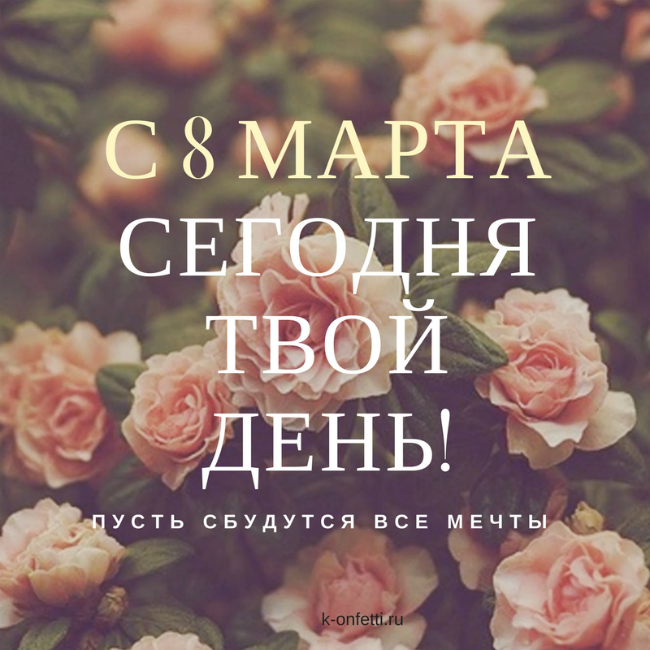


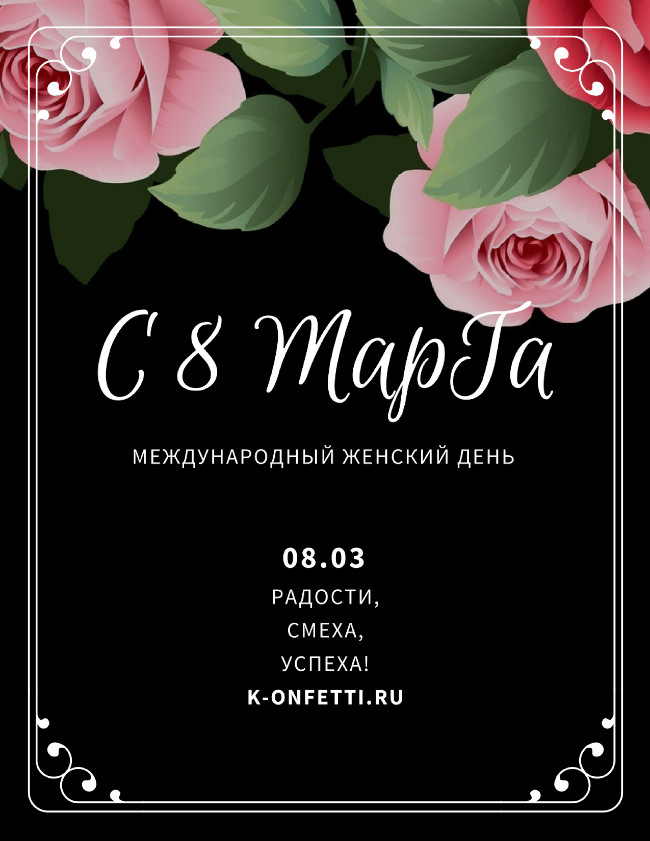

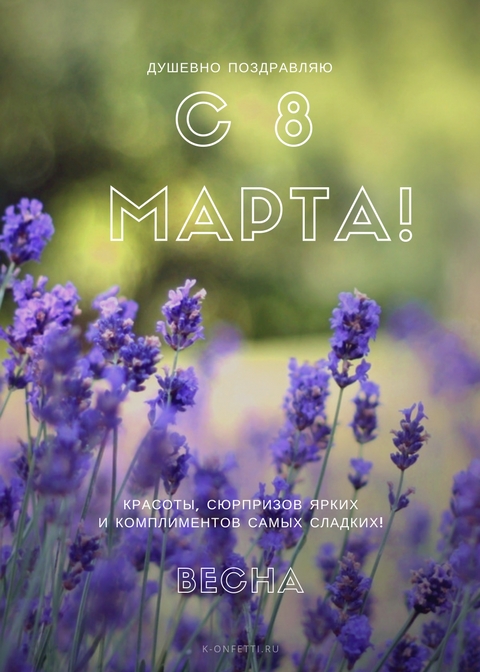
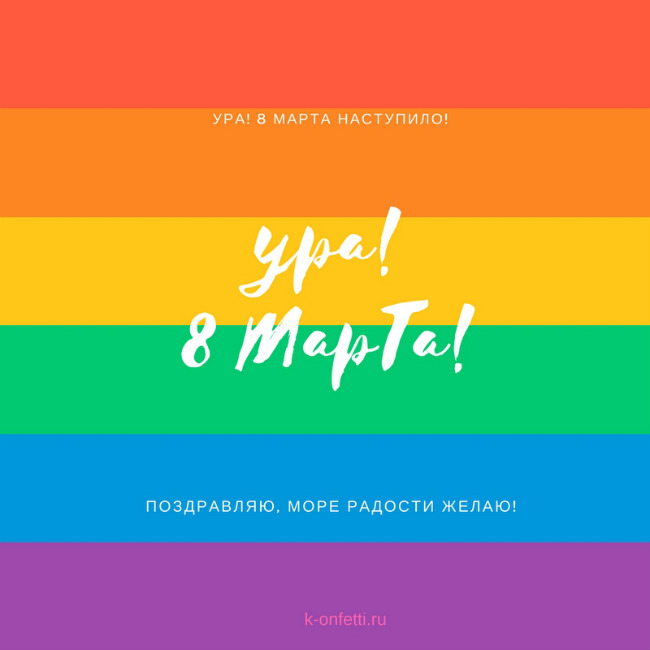
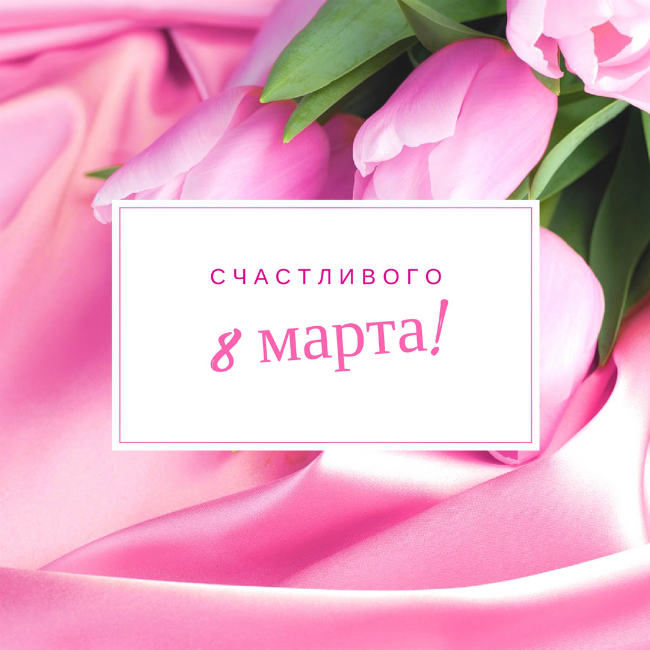
Как сделать подарки своими руками (видео):
Подарки по мотивам сериала «Друзья» своими руками
Этот сериал пользовался особой популярностью в 90-х годах, но что интересно, он по-прежнему транслируется, и очень любим многими людьми по всей планете, так почему бы не оформить такой стилизованный презент.
Милые подарки сделанные собственноручно
Подарки из этого видео посвящены 14 февраля, но на самом деле также идеально подойдут и на 8 Марта.
Как сделать подарки в стиле Гарри Поттера
Эта тема очень любима многими людьми, и истинная фанатка всегда будет рада получить что-то из этой волшебной вселенной.
Ну вот, мы и поделились с вами всей самой актуальной информацией, касаемо праздника 8 Марта, теперь вы знаете его историю, узнали о традициях, почерпнули идеи подарков и даже можете скачать эксклюзивную открытку. Будем рады, если вы пригласите почитать этот обзор своих друзей, нажав на кнопочки социальных сетей. Приятных праздников, и до новых встреч на страничках нашего сайта!

